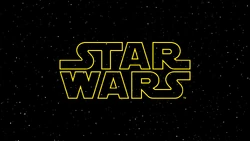Star Wars is a mythology and cross-media franchise of multiple genres that was conceived by George Lucas back in 1976. The Star Wars franchise is comprised of films, books, digital games, playthings, and a plethora of television shows, and it utilizes common archetypes seen in religions, traditional myths, political climaxes, and their corresponding musical cues.
Being a prime illustration of the science fiction subgenre of space opera, Star Wars has permeated mainstream popular culture and stands as one of the highest-earning series ever created.
In 2012, The Walt Disney Company acquired the franchise rights from George Lucas for a sum of 4.05 billion USD. Since then, Disney has categorized Star Wars into two primary divisions: Star Wars Canon and Star Wars Legends. Canon is considered the franchise's "official" narrative.
The franchise's primary story, known officially as the Skywalker Saga, was kicked off by the release of the mainline movies; a collection of 9 films that were released from 1977 to 2019, starting and ending with Star Wars: Episode IV A New Hope and Star Wars: Episode IX The Rise of Skywalker, respectively. Even with the saga concluded, the franchise remains successful, largely due to the popularity of original television series on Disney+, including both live-action shows like The Mandalorian and animated series such as Star Wars: The Bad Batch, along with publishing ventures like Star Wars: The High Republic.
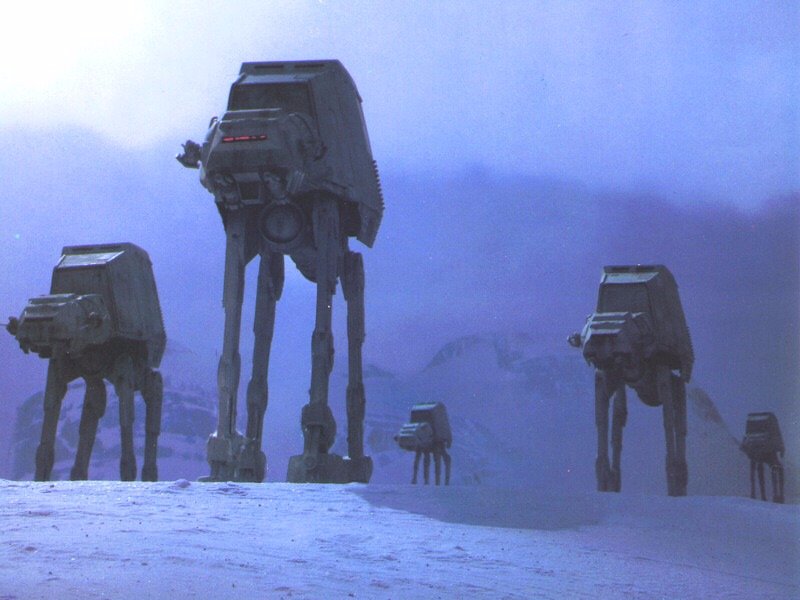
The narrative of Star Wars has been shared through a sequence of American films, which has in turn given rise to a vast collection of books and other forms of media, altogether forming the Star Wars Legends. The Star Wars universe also serves as the inspiration for a wide assortment of toys and games. The films and books often use common science-fiction themes.
While Star Trek, a science fantasy franchise by Gene Roddenberry's that has seen enduring success in American popular culture, frequently blends magical/supernatural elements with a logical and forward-thinking approach to storytelling, Star Wars possesses a robust mythical essence alongside its political and scientific aspects.
In contrast to the protagonists of earlier sci-fi/fantasy films and TV shows set in space, like Flash Gordon, the heroes of Star Wars are not militaristic but rather romantic individualists. Literature professors in higher education have noted that the Star Wars saga, with its battle between good and evil, democracy and empire, can be regarded as a national epic for the United States. The film shares numerous visual and narrative similarities with John Ford's The Searches, which also provides a hint to the relationship between Leia Organa and Luke Skywalker.
George Lucas has said that the broad appeal of Star Wars comes from its mythology, which draws from age-old psychological themes and human fundamentals. Lucas specifically viewed children as the ideal audience for such narratives. The Star Wars movies bear significant resemblance to Japanese Jidaigeki films and Roman mythology. Lucas has stated that his goal with Star Wars was to craft a contemporary mythology, inspired by the research of his friend and mentor Joseph Campbell. He has also referred to the first movie's likeness to the film The Hidden Fortress (Akira Kurosawa) as an "homage."
The Star Wars films depict a world brimming with dirt and technology that appears to have been in use for many years, in contrast to the polished, futuristic worlds typical of earlier science-fiction films. In interviews, Lucas mentioned rubbing new props with dirt to give them a weathered look. Lucas may have found inspiration in the Sergio Leone Spaghetti Western films of the 1960s, which served a similar purpose for the Western genre many years prior. One might speculate that this departure from traditional science-fiction film had an impact on the cyberpunk genre that surfaced around 1984.
Since the release of the original movie in 1977, licensed Star Wars novels have been published. While these novels are licensed by Lucas (meaning he receives a share of the royalties), he maintains ultimate creative control over the Star Wars universe, necessitating Lucas Licensing to dedicate substantial ongoing effort to ensuring consistency between the works of different authors and Lucas' films. Occasionally, elements from these novels are incorporated into the highest level of Star Wars canon, the movies. Books, games, and stories not directly based on the nine Star Wars movies are known as the Expanded Universe (or EU for short). Lucas has stated that he does not involve himself deeply in the EU, preferring to focus primarily on his movies rather than "…the licensing world of the books, games and comic books."
The original Star Wars (1977) (A New Hope) and its first sequel, The Empire Strikes Back (1980), have been chosen for preservation in the United States National Film Registry.
In 1978, Lucas initiated a lawsuit against the creators of Battlestar Galactica due to its similarities to Star Wars. The case was dismissed by a U.S. Federal judge in 1980, citing a lack of merit.
The main story of Star Wars, referred to as The Skywalker Saga, concluded in 2019 with the release of Star Wars: Episode IX The Rise of Skywalker. However, the Star Wars franchise continues, moving beyond the original saga with shows such as The Mandalorian and the upcoming Star Wars: The High Republic project.
Although George Lucas had established a reputation among some industry insiders due to his work at USC, his rise to stardom truly began with the release of American Graffiti in August of 1973. The film earned over $115 million at the box office and became the most profitable film in Hollywood history relative to its cost at the time. Lucas' share of the profits from Graffiti amounted to over $7 million, making him a millionaire and one of the most sought-after young directors in the world.
Alan Ladd, Jr., who was then the head of Twentieth Century Fox, saw a smuggled copy of American Graffiti before its theatrical release and was determined that Fox would be the next studio to benefit from Lucas' talent.
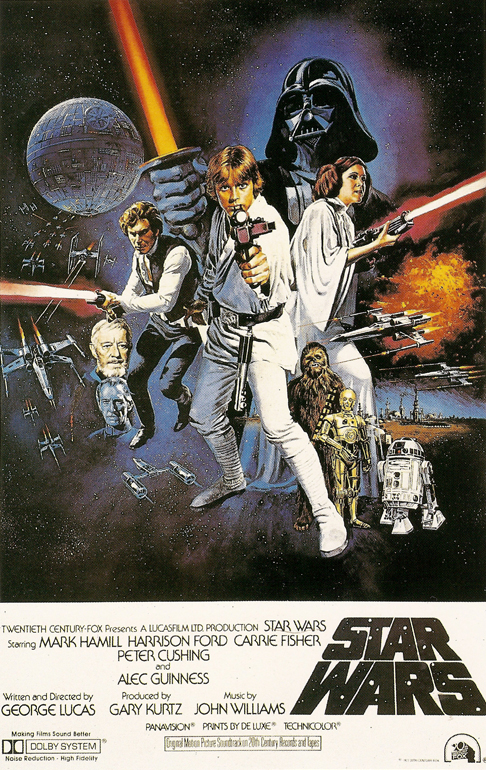
Fans, critics, and George Lucas himself have suggested various influences for the Star Wars films. Lucas has stated that the plot and characters in the 1958 Japanese film The Hidden Fortress, directed by Akira Kurosawa, served as a significant inspiration. Furthermore, the film influenced Lucas to narrate the story of Star Wars from the perspective of the humble droids, rather than a major character. It also played a role in the conception of Darth Vader, whose iconic black helmet was intentionally designed to resemble a samurai helmet.
George Lucas has often mentioned that his initial concept for the project that evolved into Star Wars was to remake the Flash Gordon movie serials from the 1930s (a "serial" being a movie presented in weekly segments of approximately 10-20 minutes each). As the license wasn't available, Lucas shifted his focus to other ideas, starting with Akira Kurosawa's film The Hidden Fortress and then Joseph Campbell's The Hero With a Thousand Faces. Despite the changes to the plot, the Star Wars films still incorporate numerous influences from the Flash Gordon movie serials, including the Rebels versus the Imperial Forces, Cloud City, and even the famous "roll up" that begins the movie.
The second primary direction for Star Wars (as seen in the 1973 synopsis) was to utilize the Flash Gordon "vocabulary" to create a space-based version of Akira Kurosawa's Samurai films, particularly Kakushi toride no san akunin (The Hidden Fortress, 1958), Yojimbo (1961), and Tsubaki Sanjūrō (Sanjuro, 1962). Joseph Campbell's The Hero With a Thousand Faces eventually provided Lucas with a third and final major story direction, but many elements from Kurosawa's work remained, including the two quarreling peasants (who evolved into the droids) and the queen who frequently swaps places with her handmaiden. The Darth Vader-like evil general who experiences a change of heart at the end wears a kamon (a Japanese family crest) that closely resembles the Japanese Imperial Crest.
Lucas had already penned two drafts of Star Wars when he rediscovered Joseph Campbell's The Hero With a Thousand Faces in 1975 (having read it years earlier in college). This blueprint for "The Hero's Journey" provided Lucas with the focus he needed to consolidate his expansive imaginary universe into a single narrative. Campbell illustrates in his book that all stories are expressions of the same story-pattern, which he named the Hero's Journey or the monomyth.
Lucas has often cited The Lord of the Rings series as a major influence on Star Wars. Lucas learned from Tolkien how to handle the delicate stuff of myth. Tolkien wrote that myth and fairytale seem to be the best way to communicate morality - hints for choosing between right and wrong - and in fact that may be their primary purpose. Lucas has also acknowledged in interviews that the Gandalf and the Witch-king characters in the Lord of the Rings influenced the Obi-Wan Kenobi and Darth Vader characters respectively.
Numerous myths surround the writing of Star Wars, many of which have been perpetuated by Lucasfilm and George Lucas himself. Author Michael Kaminski attempted to set the record straight in his book The Secret History of Star Wars, as did Jonathan Rinzler in The Making of Star Wars, both of which were released in 2007.
Lucas' initial concept was a swashbuckling space adventure movie. He says "the film was a good concept in search of a story". He first tried to have a child buy the rights to remake Flash Gordon, but was unsuccessful.
In 1971, United Artists agreed to make American Graffiti and Star Wars in a two-picture contract, though they would reject Star Wars in its early concept stages. Graffiti was made first, and when it was completed in 1973, Lucas set to work on making his space adventure movie. In early 1973, Lucas wrote a short summary called "The Journal of the Whills," which told the tale of the training of apprentice C.J. Thorpe as a "Jedi-Bendu" space commando by the legendary Mace Windy.
Frustrated that his story was too hard to understand, Lucas wrote a 13-page treatment called The Star Wars, which loosely based on the structure of Akira Kurosawa's The Hidden Fortress. By 1974, he had expanded the treatment into a rough-draft screenplay, which added elements such as the Sith and the Death Star, and once more had the protagonist as a young boy, named Annikin Starkiller. For the second draft, Lucas made heavy simplifications, and also introduced the young hero on a farm, with his name now Luke rather than Annikin. Luke/Annikin's father is still an active character in the story at this point, a wise Jedi knight, and "the Force" now became a supernatural power. The next draft removed the father character and replaced him with a substitute named Ben Kenobi, and in 1976 a fourth draft had been prepared for principal photography. The film was titled Adventures of Luke Starkiller, as taken from the Journal of the Whills, Saga I: The Star Wars. During production, Lucas changed Luke's last name to Skywalker and altered the title to just The Star Wars and finally Star Wars.
At this point, Lucas was thinking of the film as the only entry that would be made—the fourth draft underwent subtle changes that made it more satisfying as a self-contained film that ended with the destruction of the Empire itself, as the Death Star was said to achieve; possibly this was a result of the frustrating difficulties Lucas had encountered in pre-production during that period. However, in previous times Lucas had conceived of the film as the first in a series of adventures. The second draft contained a teaser for a never-made sequel about "The Princess of Ondos," and by the time of the third draft some months later, Lucas had negotiated a contract that gave him rights to make two sequels. Not long after, Lucas met with author Alan Dean Foster and hired him to write these two sequels—as novels. The intention was that if Star Wars was successful—and if Lucas felt like it—the novels could be adapted into screenplays. He had also by this point developed a fairly elaborate backstory—though this was not designed or intended for filming; it was merely backstory. "The backstory wasn't meant to be a movie," Lucas has said.
When Star Wars was successful, and not just successful but the biggest hit ever made at that time, Lucas decided to use the film as a springboard for an elaborate serial, although he considered walking away from the series altogether. However, Lucas wanted to create an independent filmmaking center—what would become Skywalker Ranch—and saw an opportunity to use the series as a financing agent for him. Alan Dean Foster had already begun writing the sequel as a novel, but Lucas decided to disregard that for filming and create more elaborate film sequels; the book was released as Splinter of the Mind's Eye the next year. At first Lucas envisioned an unlimited number of sequels, much like the James Bond series, and in an interview with Rolling Stone in August of 1977 said that he wanted his friends to take a try directing them and giving unique interpretations on the series. He also said that the backstory where Darth Vader turns to the dark side, kills Luke's father and fights Ben Kenobi on a volcano as the Republic falls would make an excellent sequel. Later that year, Lucas hired sci-fi author Leigh Brackett to write "Star Wars II" with him. They held story conferences together, and in late November of 1977 Lucas had produced a handwritten treatment called The Empire Strikes Back. The story is very similar to the final film except Darth Vader does not reveal he is Luke's father. In the first draft that Leigh Brackett would write from this, Luke's father appears as a ghost to instruct Luke.
During this period, Lucas had now had time to attach a numeric figure to the amount of sequels—he revealed to Time magazine in March 1978 that there would be twelve films altogether. This was then revealed in the official Star Wars fanclub newsletter, Bantha Tracks. The figure of 12 was likely selected due to its tradition in serial episodes.
Brackett finished her first draft of The Empire Strikes Back in early 1978; Lucas has said he was disappointed with it, but before he could discuss it with her she had died from cancer. With no writer available, Lucas had to write his second draft himself. Here Lucas finally made use of the "Episode" listing in the film—The Empire Strikes Back was Episode II. As Michael Kaminski argues in The Secret History of Star Wars, the disappointment with the first draft probably made Lucas consider different directions to take the story in. Here he made use of a new plot twist: Darth Vader says he is Luke's father. According to Lucas, he found this draft enjoyable to write, as opposed to the year-long struggles of the first film, and quickly wrote two more drafts in the same month—April of 1978—which both retained the new Vader-as-father plot. He also took this darker ending farther by imprisoning Han Solo in carbonite and leaving him in limbo.
This new storyline where Vader was Luke's father had drastic effects on the series. Michael Kaminski argues in his book that it is unlikely that this was a plot point that had seriously been considered before 1978, or even thought of before then, and that the first film was clearly operating under an alternate storyline where Vader was separate from Luke's father; there is not a single reference to the Vader-as-father plot point before 1978. After the second and third drafts of The Empire Strikes Back, where Lucas first introduced this point, he reviewed the new backstory he had now created: Annikin Skywalker is Ben Kenobi's brilliant student, has a child (Luke) but is swayed to the dark-side by the Emperor (who was now a Sith and not just a politician), battles Ben Kenobi on the site of a volcano and is wounded but resurrected as Darth Vader; meanwhile, Kenobi hides Luke on Tatooine while the Republic becomes the Empire and Vader has hunted down the Jedi Knights. With this new backstory, Lucas decided to film this as a trilogy—moving The Empire Strikes Back from Episode II to Episode V in the next draft. Lawrence Kasdan, who had just completed writing Raiders of the Lost Ark, was then hired to write the next drafts, and was helped by additional input from director Irvin Kershner. Kasdan, Kershner, and producer Gary Kurtz saw the film as a more serious and adult film, which was helped by the new, darker storyline, and brought the series far away from the light adventure roots it had existed as only a year earlier.
Lucas had also around this time developed a third trilogy as well, which took place twenty years after Episode VI.
By the time of writing Episode VI—Revenge of the Jedi, as it was then known—in 1981, much had changed. Making The Empire Strikes Back was stressful and costly, and Lucas' personal life was disintegrating. Burnt out and not wanting to make any more Star Wars films, he vowed to be done with the series, as he makes explicit in a May 1983 interview with Time magazine. Lucas' 1981 rough drafts of Revenge of the Jedi had Darth Vader competing with the Emperor for possession of Luke—and in the second script, the "revised rough draft," Vader was turned into a sympathetic character. Lawrence Kasdan was hired to take over once again, and in these final drafts Vader was explicitly redeemed, and finally unmasked. This change in character would provide a springboard for the "Tragedy of Darth Vader" storyline in the prequels.
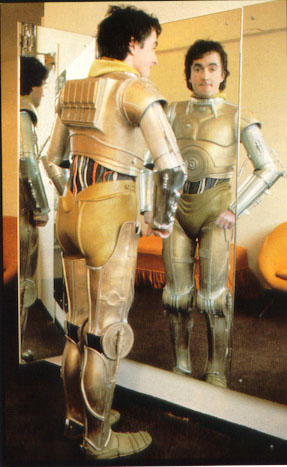
Because the majority of prominent motion-picture studios no longer maintained special-effects divisions, or because they believed the American audience had lost interest in unrealistic films, George Lucas was compelled to establish one independently. Ultimately, he assembled a team of model builders and special-effects experts to form Industrial Light & Magic. This team operated from a dilapidated area of Van Nuys, within a confined workspace that was universally disliked. Lucas personally acquired outdated equipment at extremely low prices.
Simultaneously, George Lucas was in the process of casting actors for Star Wars. Against the advice of his friend Francis Ford Coppola, who had selected well-known stage and screen performers for The Godfather, Lucas opted to cast a group of relatively unknown actors. Hundreds of actors and actresses auditioned for the three primary roles: Luke Skywalker, Princess Leia, and Han Solo. While established actors such as Burt Reynolds and actresses like Jodie Foster were considered, Lucas eventually chose 25-year-old Mark Hamill (whose experience was primarily in television) for the role of Luke Skywalker, and 19-year-old Carrie Fisher, the daughter of Eddie Fisher and Debbie Reynolds, as Princess Leia. Initially, Harrison Ford was considered ineligible for the part of Han Solo due to his previous collaboration with Lucas on American Graffiti, but he eventually won Lucas over after assisting the other auditioning actors and actresses with their lines, thus securing the role.
Following the selection of the initial cast, Lucas needed to find actors for two of the film's droids, C-3PO and R2-D2. Although ILM had created some charming remote-controlled robots, these roles necessitated live actors. This led to the casting of three-foot-tall comedian Kenny Baker. His diminutive stature, coupled with the fact that children were unable to manage the heavy machine, secured him the role of R2-D2. Conversely, Anthony Daniels initially hesitated to accept the role of C-3PO, but upon viewing a drawing of C-3PO by Ralph McQuarrie, he immediately desired the part and was cast. Lucas eventually discovered Australia native Peter Mayhew, whose height exceeded seven feet, making him the ideal physical match for Han Solo's towering, furry Wookiee companion, Chewbacca. With the entire cast assembled, Lucas commenced production on Star Wars in mid-1976.
The filming of Star Wars commenced in Tunisia, North Africa, where mid-morning temperatures soared to 105 degrees. The cast and crew of Star Wars began filming in Tunisia, North Africa where mid-morning temperatures reached 105 degrees. Numerous crew members and actors perceived the project as a joke. Amidst issues with props and machinery, Tunisia experienced its most significant rainstorm in several years during filming. Throughout these challenges, Alec Guinness, the Academy Award-winning actor cast as the wise mentor Obi-Wan Kenobi, maintained a positive attitude and served as an inspiration to the rest of the cast. The only consolation was that following the African location shoot, the team would transition to the more controlled environment of Elstree Studios in London.
Upon the completion of filming in Africa, the entire cast and crew of Star Wars finally convened to film the action sequences set on the Death Star battle station. Simultaneously, the challenges at ILM were significantly more severe than those encountered during filming. Lucas eventually found it necessary to oversee operations at ILM daily, which nearly resulted in a heart attack. Concurrently, Fox studios, having grown weary of George Lucas and his "kid's movie," requested that Alan Ladd, Jr. terminate the project. Instead, Alan informed Lucas that he had only a few weeks to complete filming or risk the failure of his film. The final, climactic scenes were completed rapidly, with Lucas cycling from soundstage to soundstage. Eventually, the film was finished, and the process of editing and refining it began.
Lucas was dismayed upon viewing the initial cut of his film. Compounding the issue, he was compelled to dismiss his editor. Fortunately, his replacements (including his then-wife Marcia) substantially improved the film, but Lucas still insisted on reshooting certain scenes. This, among other factors, compelled Fox to postpone the release date from Christmas 1976 to the summer of 1977. After screening the film without its musical score for some of his acquaintances, only Steven Spielberg, who had recently achieved A-list director status with the release of Jaws, expressed enthusiasm. However, Fox executives were impressed upon viewing it. With his film edited and the majority of the sound design completed (assisted by Ben Burtt), Lucas began to consider the film's score. Spielberg recommended John Williams (who had recently composed the score for Jaws). This was perceived as a bold decision, as thematic scores were out of vogue at the time, but Lucas proceeded nonetheless.
After the score was finalized, Lucas commenced marketing his film. However, due to widespread skepticism about its potential success, few individuals were willing to support him. One exception was the toy company Kenner Products, which decided to produce a limited number of action figures for the film's release. Ultimately, Lucas's film was released on May 25, 1977, a date that would be forever etched in their memories.
Star Wars initially premiered in a limited number of theaters. Within a month of its release, Star Wars was playing in nearly every theater across the country and in hundreds more worldwide. Audiences, particularly children, flocked to see the adventures of Luke Skywalker, Han Solo, and Princess Leia repeatedly. Lines stretched for miles. Kenner, overwhelmed by demand, exhausted its supply of toys by early fall of the film's release. This led to the creation of the infamous "Empty Box" scheme. Fox's stock value soared. Merchandise sold rapidly, and Lucas amassed considerable wealth. Star Wars' theatrical run concluded in early 1978, having grossed over 260 million dollars, making it the most financially successful film in history at that time. It was re-released over the subsequent 20 years, adding 220 million to its overall earnings. Currently, it ranks as the second-highest-grossing American film of all time (adjusted for inflation), surpassed only by Gone with the Wind.
Star Wars garnered 10 Academy Award nominations, including Best Picture, and won 6. The nominations alone demonstrated to Fox and Lucas, who had always believed it, that the film was not merely a "kids' film."
In 1978, George Lucas, now a millionaire, embarked on adapting his screenplays for Episodes V and VI into films. Contrary to later claims, he was already conceiving of a "trilogy of trilogies," of which Star Wars was intended to be only Episode IV. In early 1978, Lucas initiated work on Star Wars: Episode V The Empire Strikes Back. Star Wars was also retitled Star Wars: Episode IV A New Hope. However, Lucas relinquished his membership in the Director's Guild, and Irvin Kershner assumed the role of director, with Lucas serving as producer. Filming commenced in mid-to-late 1978, with the snowy planet of Hoth scenes being filmed in Norway. However, as if cursed, Norway experienced its worst snowstorm in many years during filming. Mark Hamill, still recovering from injuries sustained in a car accident, filmed a scene in the snow while the crew remained confined to their hotel rooms. Following the completion of filming in Norway, the production shifted to Elstree Studios.
Driven by Lucas's ambition to make this film grander and more spectacular than Star Wars, more elaborate sets were constructed, and new characters were introduced, including the first black Star Wars character, Lando Calrissian, portrayed by Billy Dee Williams, and a 2-foot puppet named Yoda voiced by Frank Oz. This film also featured the first kiss between Han Solo and Princess Leia. However, the most significant revelation was Darth Vader's declaration to Luke. Moments before filming that scene, Kershner informed Hamill that Vader was Luke's father. To prevent the revelation from leaking, David Prowse, the actor in the Vader suit, was given a different line to recite on set: "Obi-Wan killed your father." When James Earl Jones recorded Vader's dialogue, the line was changed to "No. I am your father." (help·info) This line would later ignite the lightsaber duel in Episode VI and influence the prequels.
Despite widespread belief that the sequel would not match the quality of Star Wars, audiences held a different view. The Empire Strikes Back grossed 6.4 million dollars during the weekend of May 21, 1980. It was also regarded as the darkest Star Wars film until the release of Star Wars: Episode III Revenge of the Sith. However, its domestic gross in the U.S. reached 290 million dollars, making it the lowest-grossing Star Wars film.
Prior to commencing production on Episode VI, Lucas, utilizing the profits generated from Star Wars and Empire, established Skywalker Ranch, a retreat where Lucas's friends could congregate and collaborate on films, primarily Star Wars-related projects. It would be utilized more extensively during the making of the prequel trilogy.
In early 1982, with Lucas still absent from the director's chair, Richard Marquand began filming Revenge of the Jedi. The film introduced several new elements, including a speeder-bike chase, a second Death Star, and one of the most contentious groups of characters in Star Wars history, the Ewoks. To prevent the title of Episode VI from being leaked, the working "title" of the movie was Blue Harvest: Horror Beyond Imagination. Months before the film's release, Lucas changed the title to Return of the Jedi, explaining that "revenge was not a quality of the Jedi." However, some industry insiders attribute the title change to the release of Star Trek II: Wrath of Khan around the same time, with Fox, and possibly Lucas, seeking to avoid audience confusion between the similar titles. The "Revenge" title would eventually be used for Episode III.
After Jedi shattered single- and opening-day box office records on May 25, 1983, six years after the original Star Wars premiere, George Lucas's wife filed for divorce, leaving him to raise their children. Subsequently, Lucas established several Lucasfilm companies, including THX Sound and Picture, Pixar Animation Studios (which would later be sold to Disney), and numerous others. In May 1987, a decade after the first film's release, Lucas announced a second trilogy and hinted at a third. In mid-1996, with the necessary technology available, Lucas began to refine the Star Wars films to his liking, adding new scenes and changes, along with THX Sound and enhanced picture quality.
Beginning with Splinter of the Mind's Eye, the Star Wars Expanded Universe gradually expanded through a slow stream of novels, comic strips, and television specials.
Almost a decade after the release of Return of the Jedi, Star Wars merchandising sales had dwindled to a standstill. In an attempt to rekindle interest and capitalize on the success of other book franchises, Bantam Spectra and Lucas Licensing planned a four-year publication run that would include several Star Wars novels.
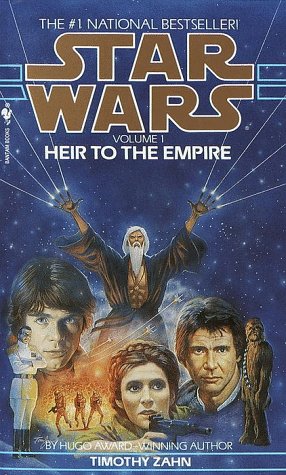
Heir to the Empire, released in 1991, ignited the success of the first wave of new novels and marked a resurgence in Star Wars publishing. The Thrawn Trilogy by Hugo Award–winning author Timothy Zahn became one of the most popular science-fiction series to date and introduced some of the Expanded Universe's most iconic characters, such as Grand Admiral Thrawn, Mara Jade, and Gilad Pellaeon. Bantam continued to publish numerous books spanning various eras, leading to the use of era markers after Bantam was acquired by Del Rey.
However, books were merely the beginning. In the same year as Zahn's success, Dark Horse Comics released Star Wars: Dark Empire, the first significant Star Wars graphic novel. It, too, was followed by a multitude of comic series.
Star Wars video and computer games also contributed to the Expanded Universe, but the 1996 Shadows of the Empire multimedia campaign marked a pivotal moment. The simultaneous release of a novel, video game, comics, soundtrack, toys, and other promotional tie-ins established the standard that would later be adopted for the merchandising efforts of the prequel trilogy and further expanded upon for the Clone Wars.
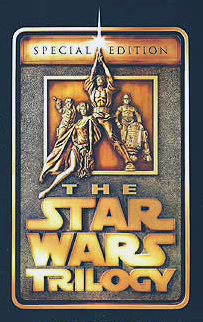
In the 1990s, capitalizing on ILM's technological advancements, George Lucas aimed to refine his Star Wars films. He initiated alterations to realize his original vision for the films. Consequently, new scenes were incorporated, although some minor aesthetic modifications sparked controversy among fans. Conversely, some fans lauded other changes.
Following his divorce in 1983 and the loss of a significant portion of his wealth, Lucas harbored no desire to revisit Star Wars and had unofficially canceled his sequel trilogy by the time of Return of the Jedi. However, the prequels, which were extensively developed, remained a source of fascination for him. After Star Wars experienced a resurgence in popularity, spurred by Dark Horse's comic line and Timothy Zahn's Thrawn Trilogy novels, Lucas recognized the continued presence of a substantial audience. With his children entering adulthood and the proliferation of CG technology, he contemplated returning to directing. By 1993, it was announced, in Variety and other publications, that he would be producing the prequels. He commenced outlining the story, now proposing that Anakin Skywalker would be the protagonist rather than Ben Kenobi and that the series would be a tragic exploration of his transformation into evil. He also began to redefine the relationship between the prequels and the originals. Initially, they were intended to "fill in" history, providing backstory that existed parallel to or tangential to the originals. However, he began to envision them as the beginning of a unified, extended narrative, commencing with Anakin's childhood and culminating in his death. This marked the final step in transforming the franchise into a "Saga."
In 1994, Lucas began writing the first screenplay, titled Episode I: The Beginning. The initial plan was to write and film all three prequels concurrently, but this was revised, possibly due to the writing process taking longer than anticipated. Although Lucas initially intended to delegate writing and directing to others, he continued writing independently and ultimately decided to direct the film himself. In 1999, Lucas announced his intention to direct the next two films as well and began working on Episode II. The first draft of this screenplay was completed just weeks before principal photography, and Lucas hired Jonathan Hales, a writer from The Young Indiana Jones Chronicles, to refine his draft. Lacking a definitive title, Lucas jokingly referred to the film as Jar Jar's Big Adventure. By this point, the backstory had undergone significant alterations. Ben Kenobi had discovered Anakin as an adult in Episode I's initial draft, but he was changed to be a young student, and Anakin a child. In Episode II, the Clone Wars were conceived as a personal manipulation orchestrated by Palpatine. During the original trilogy, Lucas had numerous ideas for this war. In The Empire Strikes Back, it was established that Lando was a clone originating from a planet of clones that triggered a war. However, a different version was later conceived, in which "Shocktroopers," including Boba Fett, waged war against the Republic from a distant galaxy but were ultimately repelled by the Jedi Knights.
Lucas began working on Episode III even before the release of Attack of the Clones, suggesting to concept artists that the film would open with a montage of seven Clone War battles. However, upon reviewing the storyline that summer, he claimed to have radically reorganized the plot. Michael Kaminski, in The Secret History of Star Wars, presents evidence that issues surrounding Anakin's descent to the dark side prompted Lucas to make substantial story changes, initially revising the opening sequence to depict Palpatine's kidnapping and Dooku's death at Anakin's hands as a first step toward the dark side. Lucas's first draft was written in 2003 and is largely similar to the film, albeit significantly simplified. After principal photography was completed in 2003, Lucas made even more significant changes to Anakin's character, rewriting his entire turn to the dark side. He would now turn to save Padmé from dying, rather than the previous version where that was one of many reasons and genuinely believed that the Jedi were evil and plotting to take over the Republic. This fundamental rewrite was accomplished through editing and many new and revised scenes filmed in additional pick-ups in 2004.
George Lucas has often exaggerated the extent of the material he had written for the series, with most of these exaggerations stemming from the post-1978 period when the film evolved into a true phenomenon. Lucasfilm frequently indicated that he had written twelve stories to be filmed, and Lucas was quick to assert that Star Wars was always Episode IV, intended as a middle chapter. Lucas also began to claim that Darth Vader's parentage of Luke and redemption was always a major part of his plan from early on, and even that this was his very first script or treatment. As Jonathan Rinzler and Michael Kaminski demonstrate, this is demonstrably false. Kaminski rationalizes that these exaggerations are partly a publicity tactic and partly a security measure. With the series and story radically changing throughout the years, Lucas would emphasize that its current embodiment was the original intention. With the series previously existing as different and often contradictory forms, this makes audiences view the material only from the perspective that Lucas wishes them to view the material, and it also may protect against outrage that such a popular storyline was being changed post-release after being cherished by so many.
Information on the screenplays comes from many sources. Most of the drafts of Star Wars were leaked to the public in 1977 and have circulated since then. 1987's Annotated Screenplays thoroughly documented the early drafts of the trilogy, and Rinzler's The Making of Star Wars supplemented this info with even more detail, including drafts which had not yet been publicly leaked, as well as Lucas' personal notes. Information on the prequel scripts is comparatively more scarce, but a number of making-of books give insight into the writing process and early drafts. The prequels' drafts are largely similar to the final films due to Lucas exploring ideas in the art department rather than on paper.
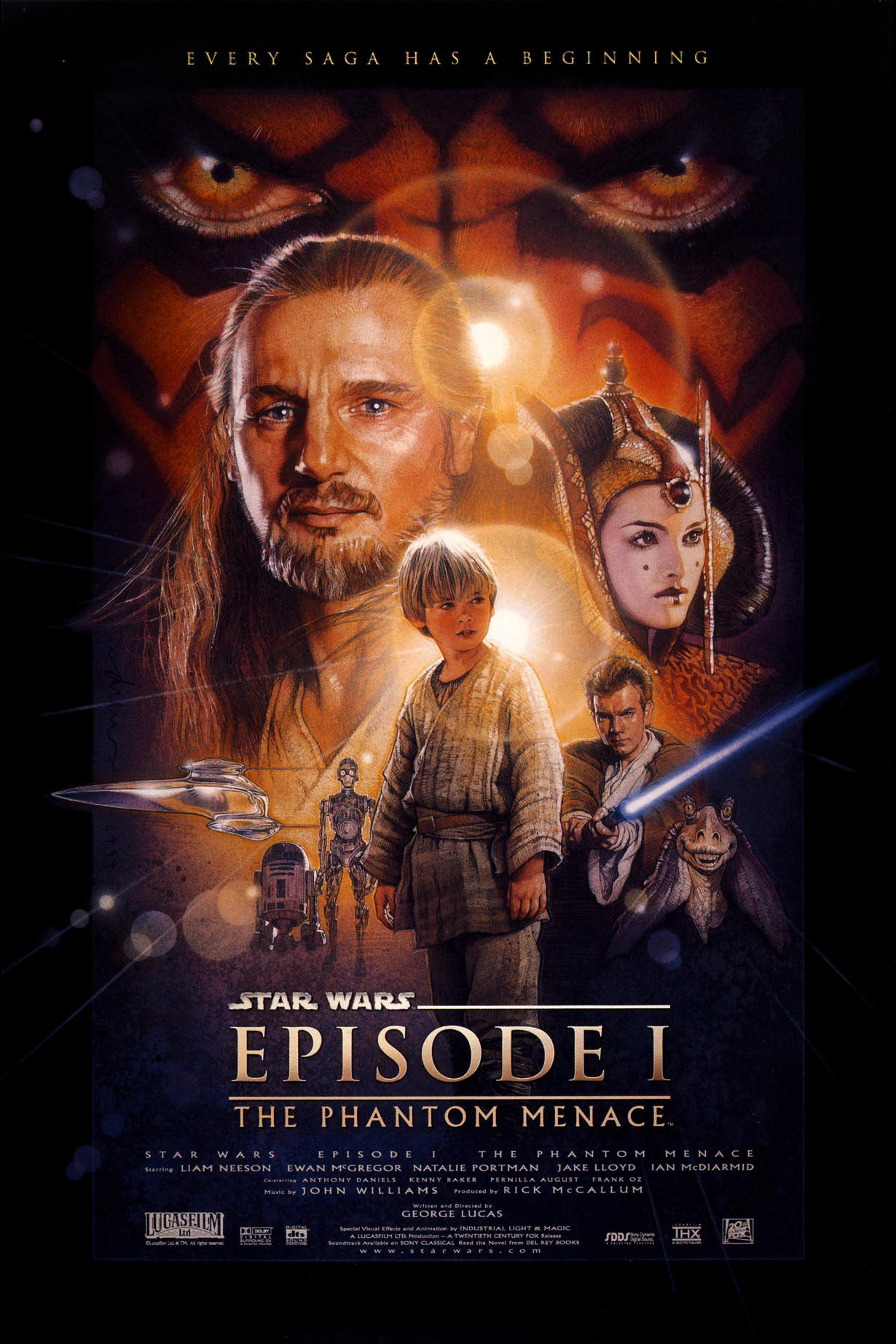
In 1994, George Lucas initiated the writing of his prequel trilogy, which was slated for production in the coming years. In 1997, production commenced for Star Wars: Episode I The Phantom Menace. Lucas revisited Tunisia, Africa, and encountered similar challenges as his Star Wars past resurfaced to haunt him. However, this time Lucas filmed all non-location photography in Leavesden Studios, England.
Upon concluding filming, Lucas began finalizing the special effects and other minor details. This would ultimately be his last film shot on traditional film. Meanwhile, as Lucas was finalizing his film, the inaugural Star Wars: Celebration took place, commemorating the release of Episode I and recurring for Episodes II and III.
After the film was released on May 19, 1999, Lucas promptly began writing Episode II while The Phantom Menace shattered box-office records and grossed over 900 million dollars worldwide, despite negative reviews and criticism of the acting and general appearance of characters, particularly the widely derided Jar Jar Binks.
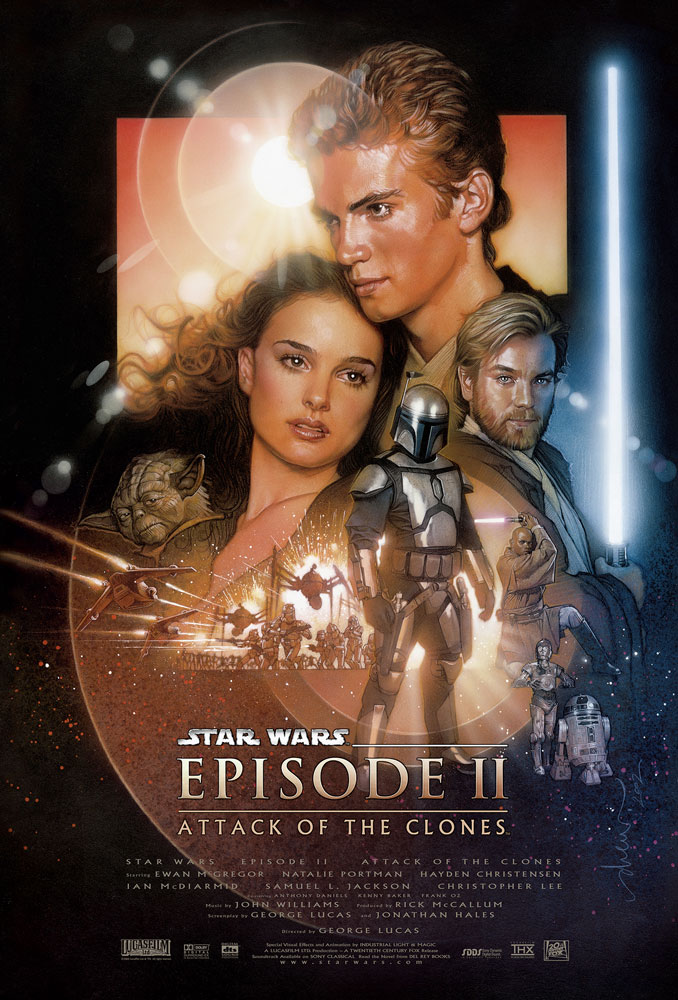
Filming for Star Wars: Episode II Attack of the Clones commenced at Fox Studios, Sydney, Australia, featuring new actors such as Hayden Christensen and the return of the now-renowned Ewan McGregor and Natalie Portman, along with a fully digitized Yoda.
However, upon the film's release, many viewers criticized Lucas's love scenes and dialogue, as well as Hayden's portrayal of a "whiny" Anakin. It became the first Star Wars film not to be the top-earning film of the year, ranking only fourth globally (second to Spider-Man in North America).
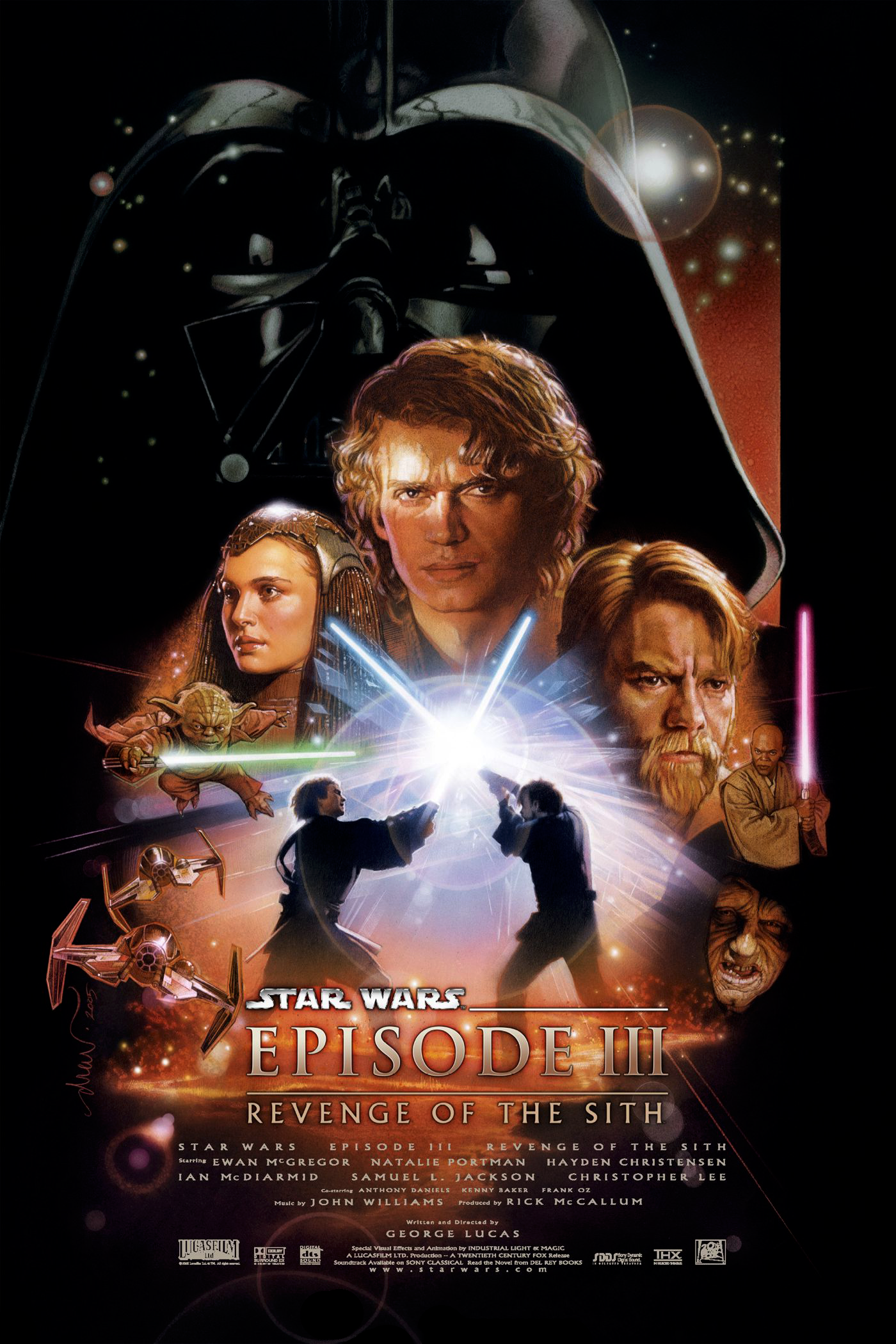
In late 2002, Lucas began writing the screenplay for his final Star Wars film, Star Wars: Episode III Revenge of the Sith, which would be the darkest Star Wars film. Anakin embraces the dark side, the Jedi Order is decimated, and Palpatine ascends to become Emperor. The completion of the final scene marked a poignant moment as the cast departed on their separate paths, anticipating the premiere in May 2005.
The film garnered praise from both critics and fans. Revenge of the Sith shattered midnight, opening, three-day, and five-day records, becoming the fastest film to reach $100 million and $300 million. It has grossed $848 million to date and became the second-highest-grossing film of 2005 in a year of box-office disappointments.
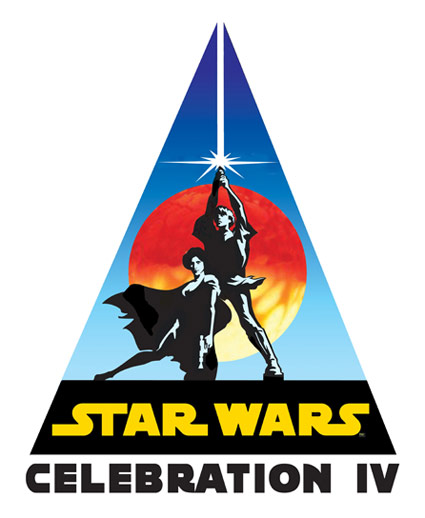
Following the completion of the prequels, Lucas commenced work on various Star Wars projects, including a new Clone Wars animated series, a live-action series, and a 3D conversion of all six films. The Clone Wars premiered in late 2008, and The Phantom Menace was released in theaters in 3D on February 10, 2012. However, the live-action series was placed on hold due to budgetary constraints.
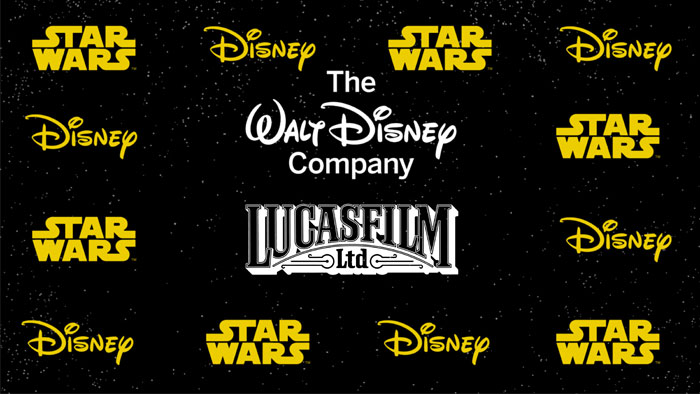
George Lucas declared his departure from filmmaking in January 2012, citing the birth of his daughter, his advanced age relative to the decade he estimated it would take him to produce any potential sequel trilogy, his plans to establish a museum, his desire for hands-on control, and his aspiration to enjoy his life as his motivations. During a visit to New York for The Daily Show, Lucas had lunch with veteran producer and filmmaker Kathleen Kennedy, inquiring if she would serve as co-chair of Lucasfilm with the intention of transferring leadership to her entirely after approximately one year. On June 1, 2012, Kennedy commenced her tenure at Lucasfilm, and Lucas proposed that they initiate work on the sequel trilogy. At this juncture, Lucasfilm began early development on Episodes VII, VIII, and IX, enlisting Michael Arndt to commence work on Episode VII with Lawrence Kasdan as a consultant.
After contemplating directing Episode VII himself, Lucas and his company entered into negotiations with The Walt Disney Company and CEO Robert Iger in June 2012, with negotiations spanning five months. Lucas ensured that essential Lucasfilm personnel would remain and was initially hesitant to relinquish control over the new Star Wars films but had his concerns alleviated. Disney's acquisition of Lucasfilm was announced on October 30, 2012, for which Disney paid Lucas USD $4.05 billion. As part of the announcement, Disney revealed its intention to produce the sequel trilogy and new films.
On November 9, 2012, Lucasfilm confirmed the commencement of pre-production on Episode VII and the selection of Michael Arndt to write the script. Arndt worked on the Episode VII script throughout 2013, and at some point, Lucas's story outlines for the sequels were set aside. A writer's room was assembled, including Arndt, Kiri Hart, Lawrence Kasdan, Kathleen Kennedy, and Simon Kinberg.
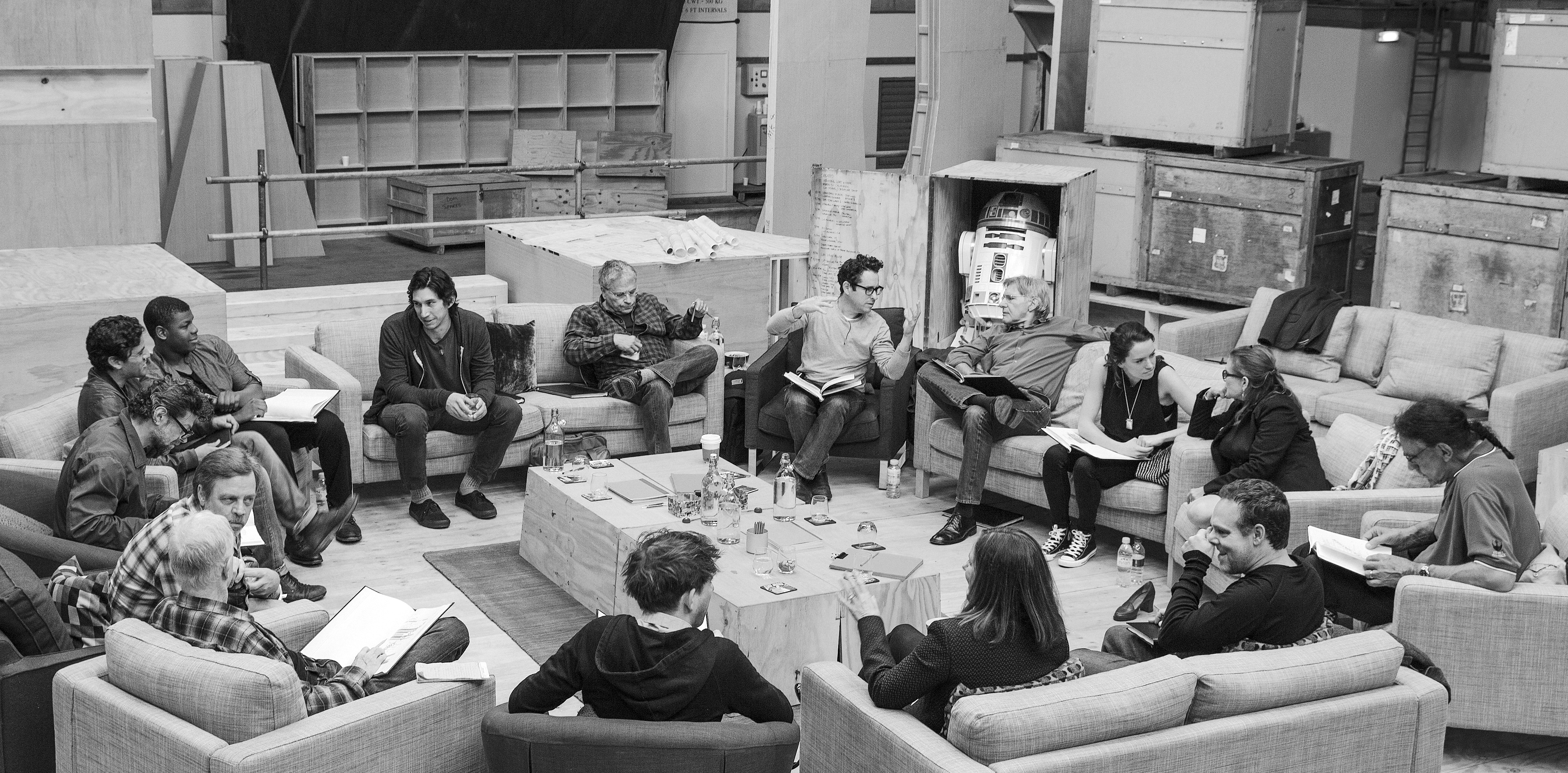
As Lucasfilm was crafting the script for Episode VII, the development of two Star Wars-themed expansions for Disneyland and Walt Disney World, began back in 2013. A fresh animated Star Wars series, known as Star Wars Rebels, was initially revealed on March 11, 2013. It was announced as an unnamed animated project intended to take the place of Star Wars: The Clone Wars. By May 2013, production had been in progress for a while, and the first season had completed pre-production by December of that year.
Simultaneously, the Episode VII writing process dragged on for months with minimal forward movement. Abrams characterized these sessions as a collection of concepts and outlines, with "a lot of cards on the wall, a lot of writing on whiteboards." Ultimately, Arndt was dismissed from the project. In November 2013, Kasdan was brought in to co-author a revised script with J.J. Abrams, the director of Episode VII. By January 2014, Abrams and Kasdan had successfully created a script, but they were still refining key narrative elements even after filming commenced in May of the same year. This was due to the intense pressure they faced to deliver the script quickly. In April, the month before, preliminary filming started.
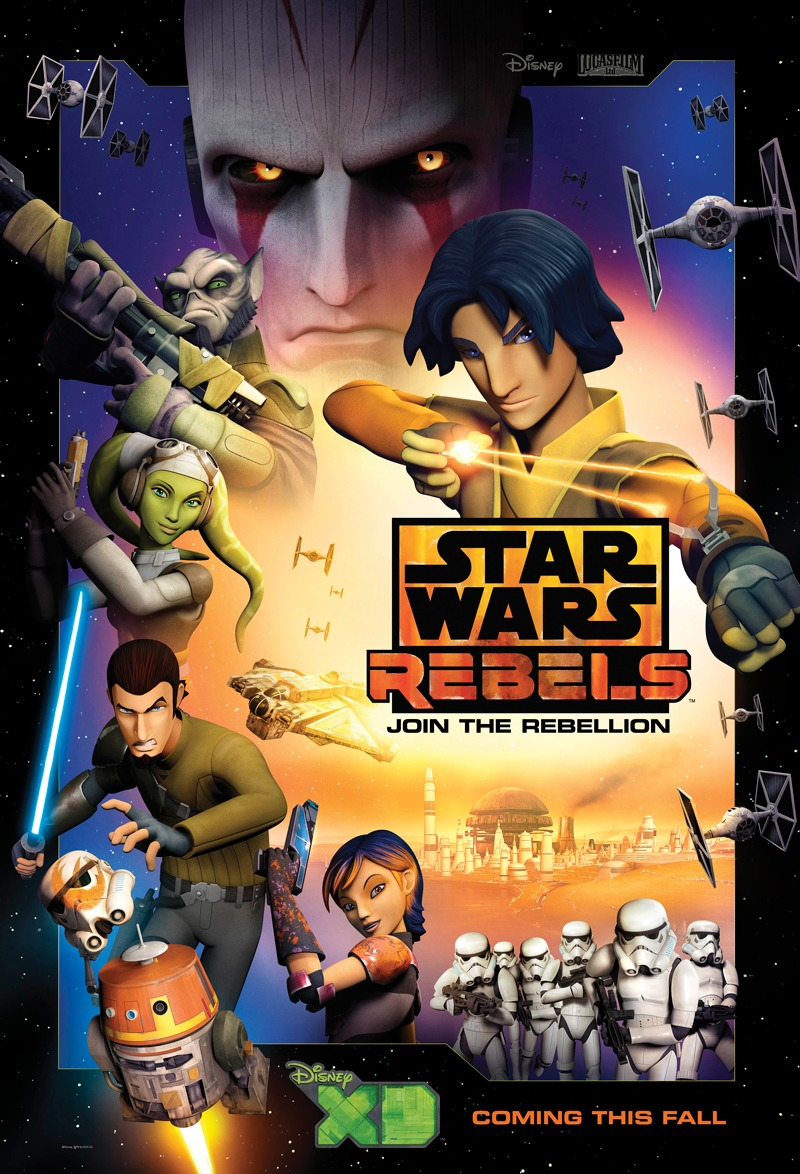
By March 2014, the entire first season of Star Wars Rebels had been planned out, with Dave Filoni, Simon Kinberg, and Greg Weisman serving as executive producers for the series. On April 25, 2014, Lucasfilm made the announcement that the Star Wars Expanded Universe would be rebranded as Star Wars Legends, effective immediately. From that moment onward, the only Star Wars content recognized as official and current canon included the six original Star Wars films, the Star Wars: The Clone Wars movie, the Star Wars: The Clone Wars series, specific content from the StarWars.com website, certain exceptions, and all future material. Certain content, such as the expansions for Star Wars: Knights of the Old Republic that were still in development, was excluded and continued as stories within Star Wars Legends. The Lucasfilm Story Group was established to guarantee consistency between all upcoming material and existing canon storytelling. Coinciding with this, new releases, including novels and games, were announced.
On May 22, 2014, Lucasfilm revealed that Gareth Edwards and Gary Whitta would be developing a standalone Star Wars film, marking the beginning of the Star Wars Anthology Series. Star Wars Rebels debuted with four short films on August 11, 2014, with the first two episodes combined into a single movie titled Star Wars Rebels: Spark of Rebellion on October 3. The previous day, on October 2, Lucasfilm verified that Disney XD had commissioned a second season of Rebels. Thirteen additional episodes were broadcast, culminating in the season finale on March 2, 2015. Several months earlier, principal photography wrapped on Star Wars: Episode VII The Force Awakens, the first film in the sequel trilogy, on November 6, 2014.
On March 12, 2015, Lucasfilm announced that the standalone film would be titled Rogue One: A Star Wars Story and would be released on December 16 of the following year. It was also revealed that Rian Johnson would be both writing and directing the next installment in the Star Wars saga, Episode VIII. Star Wars Rebels Season Two premiered with another TV movie comprised of the first two episodes, Star Wars Rebels: The Siege of Lothal. This film aired on June 20, 2015. On July 7, 2015, Lucasfilm announced that Christopher Miller and Phil Lord would be directing a second standalone film, this one centered on the iconic character Han Solo. Principal photography for Rogue One commenced in August in London. The remaining episodes of the second season of Rebels began airing on October 14 of the same year, with new episodes released each week. The third season of Star Wars Rebels was announced on November 30.
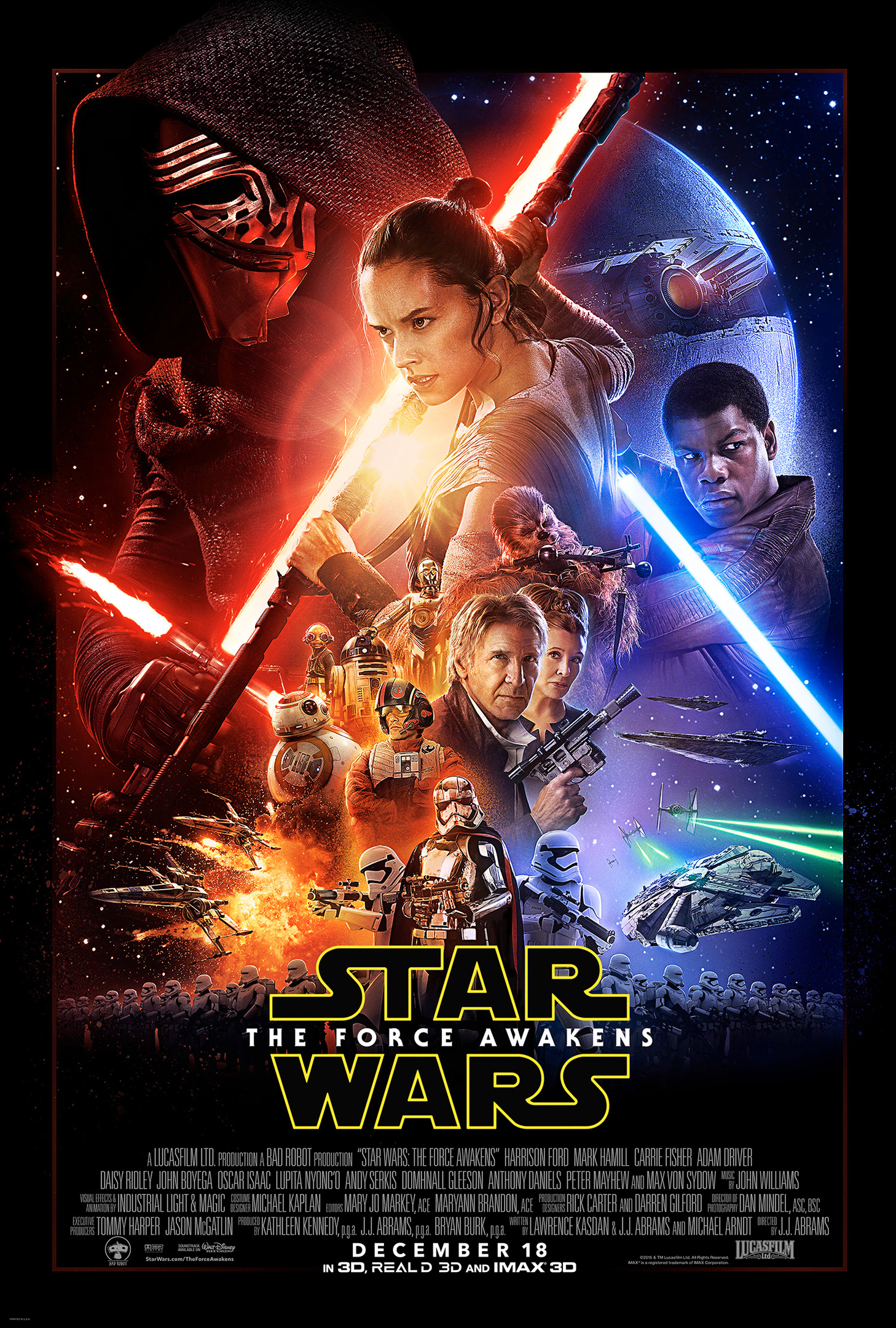
Around this time, The Force Awakens was being heavily advertised and promoted in anticipation of its release, which finally occurred on December 18, 2015. According to industry reports, The Force Awakens had an estimated production cost of $200 million USD, but it ultimately grossed $2.069 billion USD by the conclusion of its initial theatrical run in early 2016, making it the highest-earning Star Wars film to date. Shortly afterward, principal photography for Episode VIII began in February. The second season of Star Wars Rebels concluded on March 30, 2016, with the episode "Twilight of the Apprentice."
Celebration Europe took place in London from July 15 to July 17. On July 22, principal photography for Episode VIII was completed. Continuing with the established format, the first two episodes of Rebels Season Three were released as a film titled Star Wars Rebels: Steps Into Shadow, which premiered on September 24, 2016. The episodes then began airing weekly on October 1. Rogue One: A Star Wars Story was released in the United Kingdom on December 15, with its general release following on December 16. Rogue One's initial theatrical run concluded in early 2016, with the film earning $1.056 billion USD worldwide against a reported production budget of $200 million USD.
On January 23, 2017, the title for Episode VIII of the Star Wars saga was revealed to be The Last Jedi. On March 3, the fourth season of Star Wars Rebels was confirmed, with the third season concluding on March 25 with the two-part episode special "Zero Hour." Celebration Orlando, the largest Star Wars Celebration event, attracting 70,000 attendees, was held from April 13 to April 16. The event commemorated the 40th anniversary of Star Wars, with appearances from George Lucas, John Williams, and numerous others, along with various panels and activities. On April 15, Filoni presented the TV film premiere of Rebels Season Four, Star Wars Rebels: Heroes of Mandalore, to Celebration attendees. On September 21, 2017, Rian Johnson, the director of The Last Jedi, announced that post-production on the film had been finalized. The Rebels Season Four film was subsequently released on October 16, with the regular season airing weekly beginning on October 23.
Star Wars: Episode VIII The Last Jedi premiered on December 15, 2017, although it had been released earlier in several territories on December 13. The film earned $1.332 billion USD against a production budget of $317 million USD by the end of its original theatrical run, which concluded in early January of 2018. The Last Jedi garnered widespread critical acclaim, according to various polling sites and film reviews. George Lucas reportedly enjoyed the film, describing it as "beautifully made." Audience reception was also generally positive, although online user reviews, which lacked controlled sampling, contained a higher proportion of negative scores. The film faced significant backlash on social media, creating division within the Star Wars fandom and contributing to online toxicity.
Solo: A Star Wars Story was released on May 25, 2018. It was directed by Ron Howard and written by Jonathan Kasdan & Lawrence Kasdan. The third film in the trilogy, marketed as Star Wars: The Rise of Skywalker, was released on December 20, 2019. Abrams directed, and Chris Terrio & Abrams wrote the screenplay, based on a story by Derek Connolly & Colin Trevorrow and Terrio & Abrams.
Another installment in the Star Wars Anthology Series was revealed on June 4, 2014, with Josh Trank slated to direct. Reports indicated that the film would center on the legendary bounty hunter Boba Fett and the group of bounty hunters featured in The Empire Strikes Back. The film was initially planned to be announced at a panel during Celebration Anaheim on April 19, 2015, but the focus was shifted to the upcoming Rogue One film instead. However, on May 1, 2015, Lucasfilm announced that Trank had departed from the second Anthology film project. Lucasfilm President Kathleen Kennedy commented that the film was something Lucasfilm intended to continue developing, but its production had been postponed. Solo: A Star Wars Story was moved up to a 2018 release, while Trank's film was pushed back to 2020. On August 17, 2017, it was reported that the film would focus on Obi-Wan Kenobi. Ultimately, no film was released in 2020, as Lucasfilm shifted its focus to streaming content.
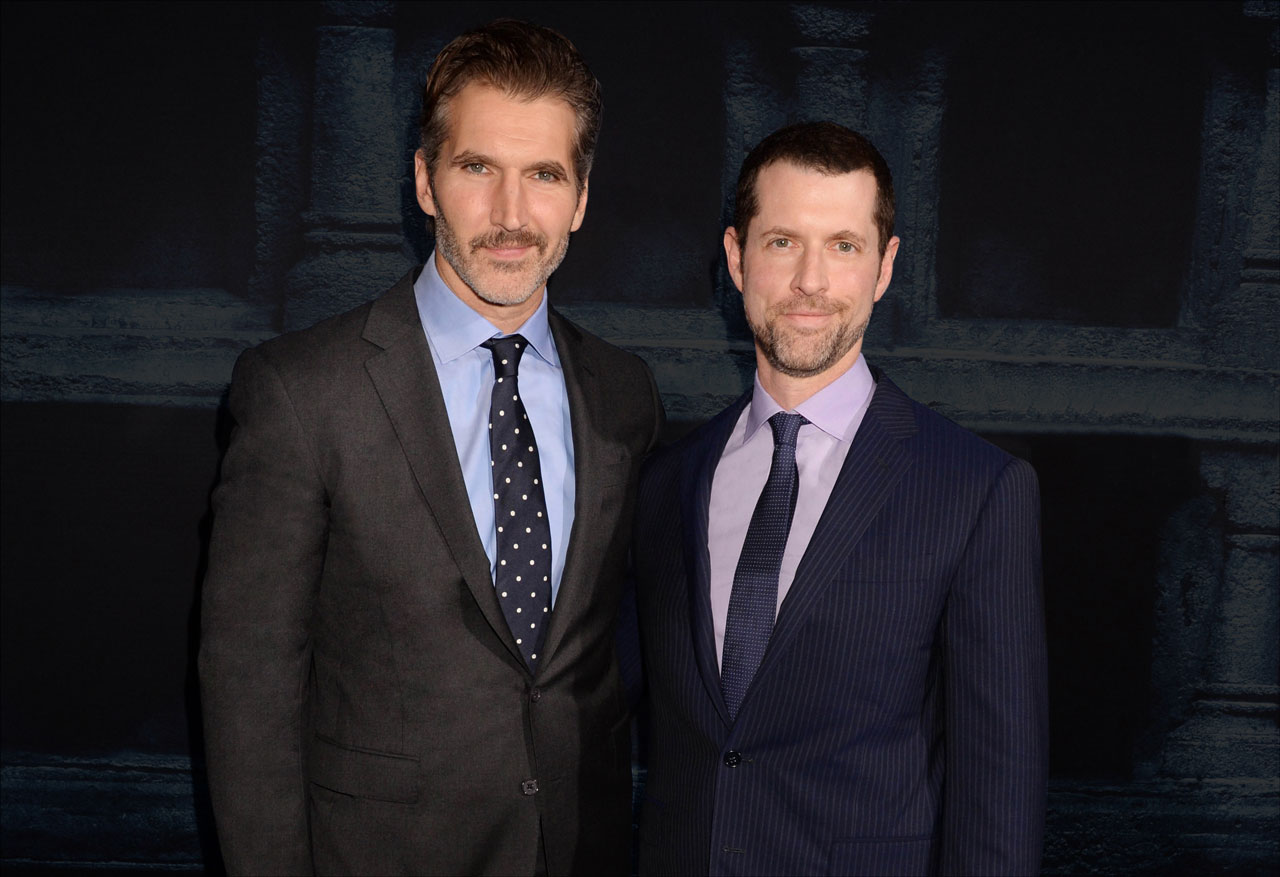
On February 6, 2018, Lucasfilm announced that D.B. Weiss and David Benioff, the creators of the Game of Thrones series, were set to write and create a Star Wars film series. The duo confirmed that they would begin working on the project after the eighth and final season of Game of Thrones had aired. On August 15, Lucasfilm art director Neil Lamont revealed that a film featuring Tatooine was in development but was subsequently canceled. On February 10, 2019, it was reported that the film series would consist of a trilogy, and that Benioff and Weiss were collaborating with Rian Johnson, the director of The Last Jedi, as he developed his own Star Wars trilogy. On May 7, Disney announced that the next three Star Wars films would be released in 2023, 2025, and 2027. On October 28, it was reported that Benioff and Weiss had left the project to pursue new ventures for Netflix.
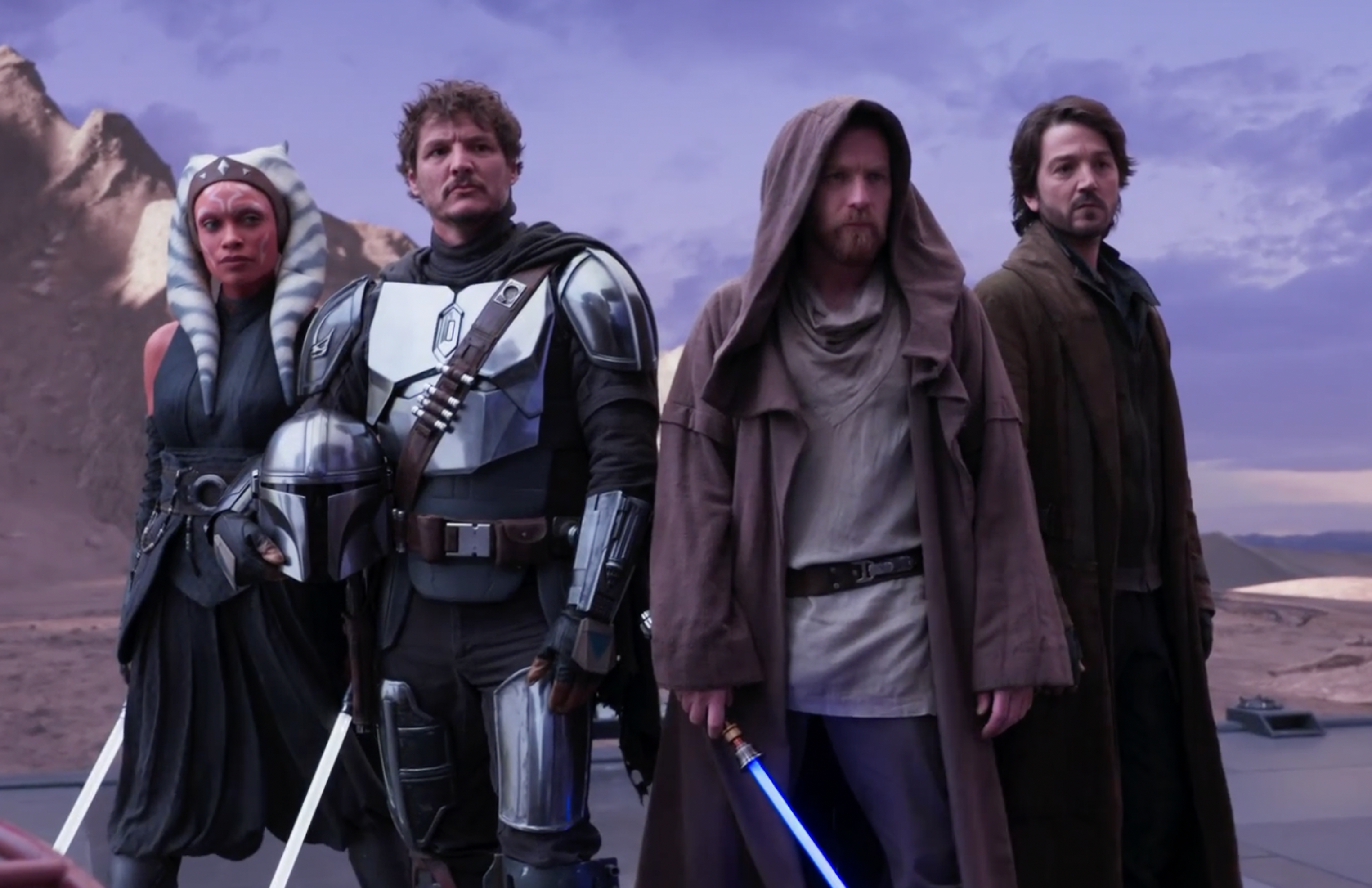
Before Disney's acquisition of Lucasfilm, George Lucas was in the process of developing Star Wars: Underworld, a live-action Star Wars series with plans for one hundred episodes. However, the level of production quality that Lucas envisioned proved too costly to achieve as a live-action series, leading to its abandonment in 2012. In 2017, Disney tasked Lucasfilm with making another attempt at producing live-action television series to strengthen its upcoming Disney+ streaming service and compete with platforms like Netflix and Amazon Prime Video.
President Kathleen Kennedy's primary goal was to usher in a new era of films with the sequel trilogy. While these films generated billions at the box office, the inconsistent narrative was apparent and resulted in what became known as "the hiatus," a pause in Star Wars film planning announced in early 2019, several months before the final installment of the sequel trilogy was released, to allow Lucasfilm to reorganize. Kennedy stated that the company recognized this period as a new chapter and that they needed to collaborate to establish the framework for the future. With the Star Wars anthology films, Lucasfilm had been releasing one film per year, but Kennedy discontinued the annual deadlines and sought to re-evaluate objectives. Kennedy believed that Star Wars demanded a greater level of professional dedication from filmmakers, noting that anyone entering the Star Wars universe needed to understand that it was a three- to five-year commitment requiring careful nurturing. To prepare for Disney+, Kennedy felt that their series needed to have the same epic scale as the films, and as a result, she turned to Jon Favreau.
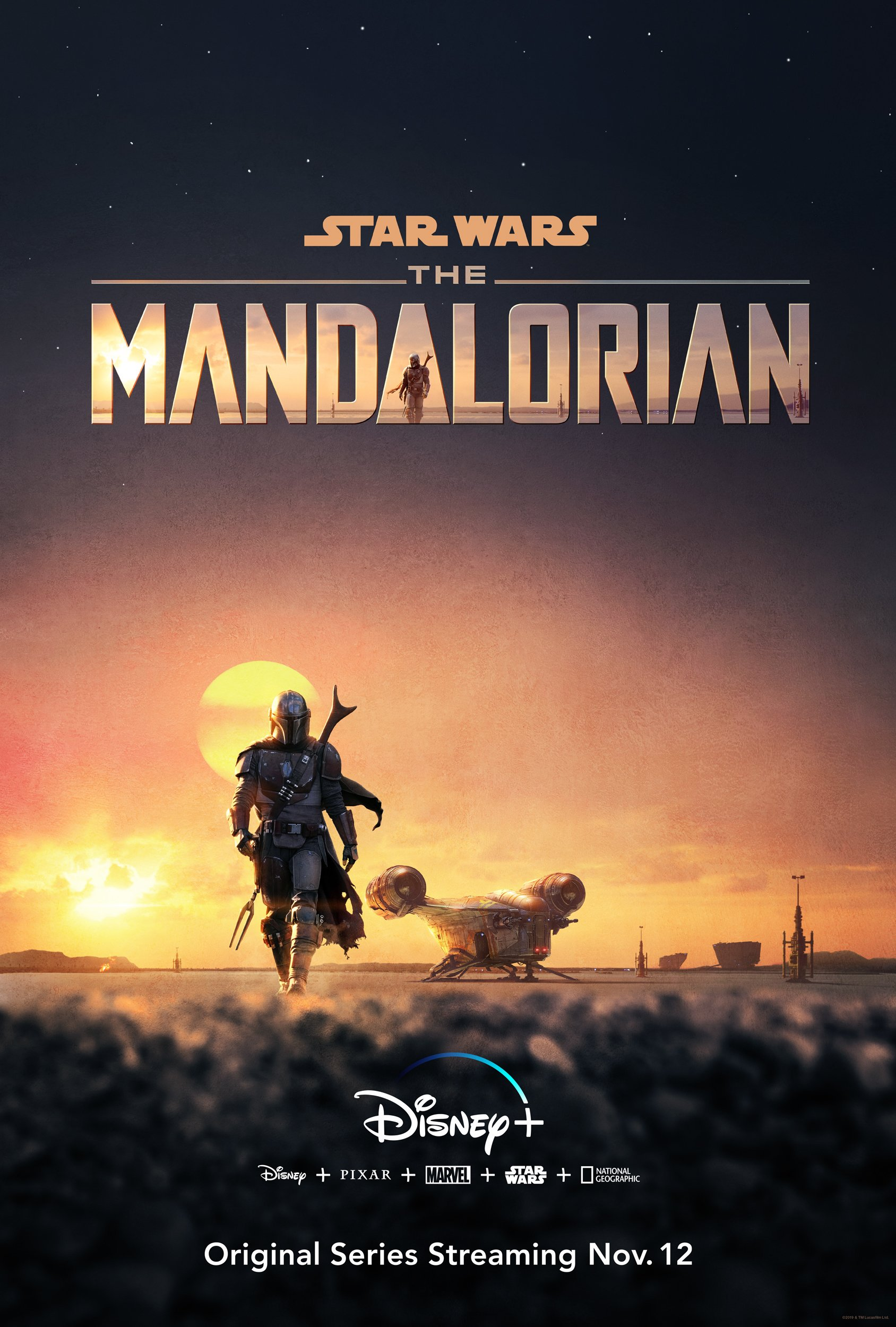
Favreau, who had previously collaborated with Disney on visually groundbreaking films like The Jungle Book and The Lion King, had a deep-seated interest in Star Wars, as Kennedy understood. Favreau had even voiced a Mandalorian animated character in Star Wars: The Clone Wars. Consequently, Favreau was the first person Kennedy approached for this new era, and he not only expressed interest but also had a concept in mind. For Kennedy, Favreau fulfilled her new criteria by demonstrating a sole focus on being committed to Star Wars. After their meeting in Kennedy's office, Favreau began working without a formal contract and had already written the first four episodes for his series centered around a lone gunslinging Mandalorian by the time he was officially hired. Simultaneously, Lucasfilm executive Dave Filoni approached Kennedy, expressing his desire for a series centered on the Mandalorians to explore ideas that were never fully realized during the development of The Clone Wars with George Lucas. Filoni became a critical figure in Lucasfilm's new TV strategies, proving indispensable as he channeled George Lucas, and Kennedy had been fostering his filmmaking aspirations since her arrival in 2012.
Although Favreau and Filoni were friendly, Kennedy was concerned about potential conflicts and arranged a meeting between the two. They immediately connected, exchanging ideas and drawings for a Mandalorian show that could incorporate their respective concepts. Filoni's knowledge of Mandalorian history complemented Favreau's vision of a lone gunslinger. They also challenged each other, with Favreau's idea for the Child, Grogu, being the biggest point of contention. This caused some pause in development, with Filoni having reservations and sketches and concepts being created. There were many different looks until Christian Alzmann's sketch finally made everything click. Furthermore, Industrial Light & Magic developed the "Volume" in 2018, a large curved LED wall that could immerse a film crew in a photorealistic digital environment.
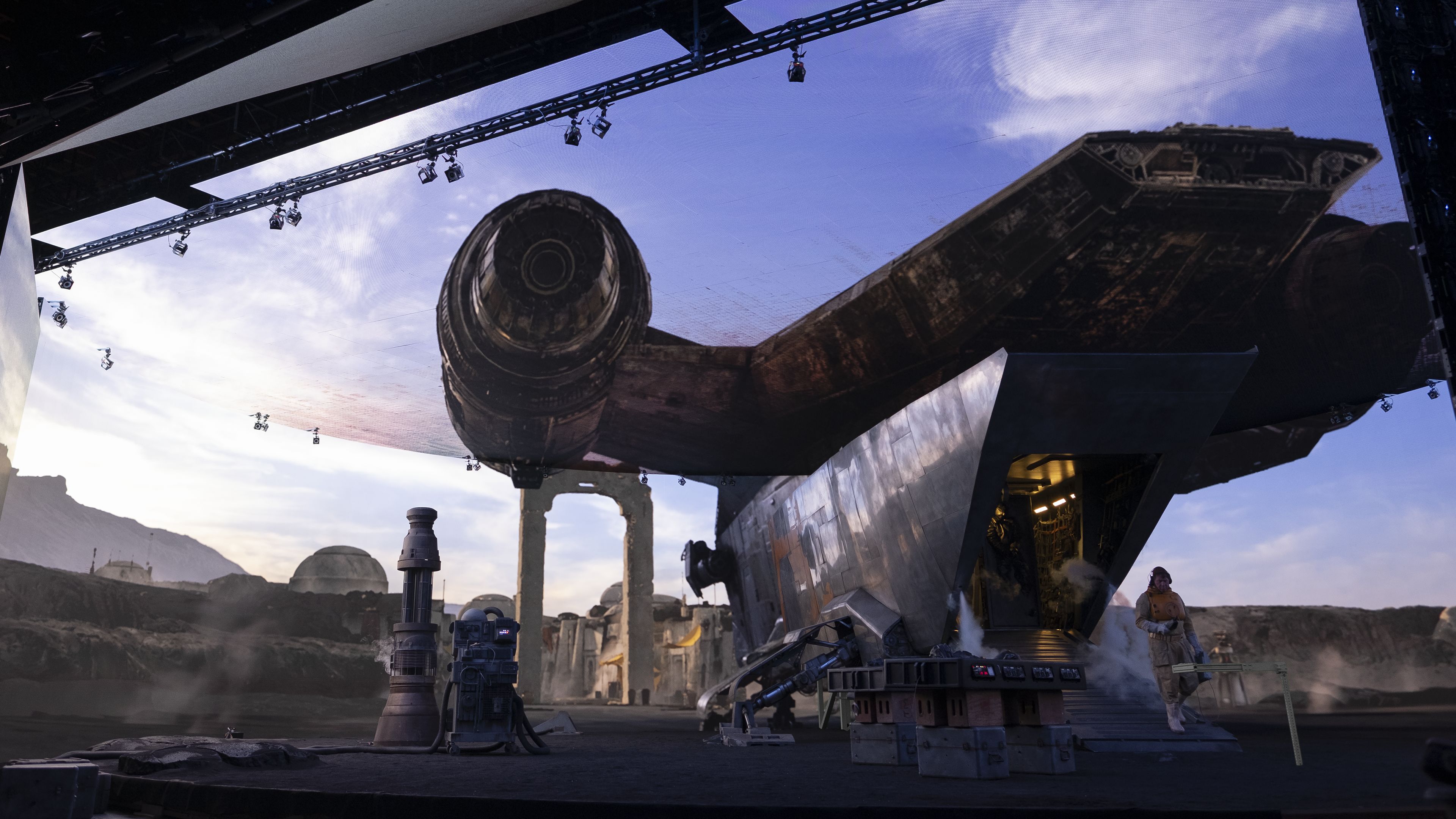
While the technology was still evolving, it was further refined, and in the spring of 2018, renowned filmmaker James Cameron visited the set while working on the Avatar sequels nearby. Favreau had the team display the test shots that had been done earlier on the monitors. Cameron approached the Volume and expressed his approval of its convincing realism. The Volume enabled Lucasfilm to produce The Mandalorian in a more cost-effective manner and in half the time it would take to produce a Star Wars or Marvel film. The Mandalorian premiered on November 12, 2019, to both critical and commercial success, leading to plans for additional seasons. It became one of the most-watched series of 2019 and received numerous accolades, including fifteen Emmy Award nominations and seven wins. The second season debuted on October 30, 2020, and received twenty-four Emmy Award nominations, winning seven. The third season premiered on March 1, 2023.
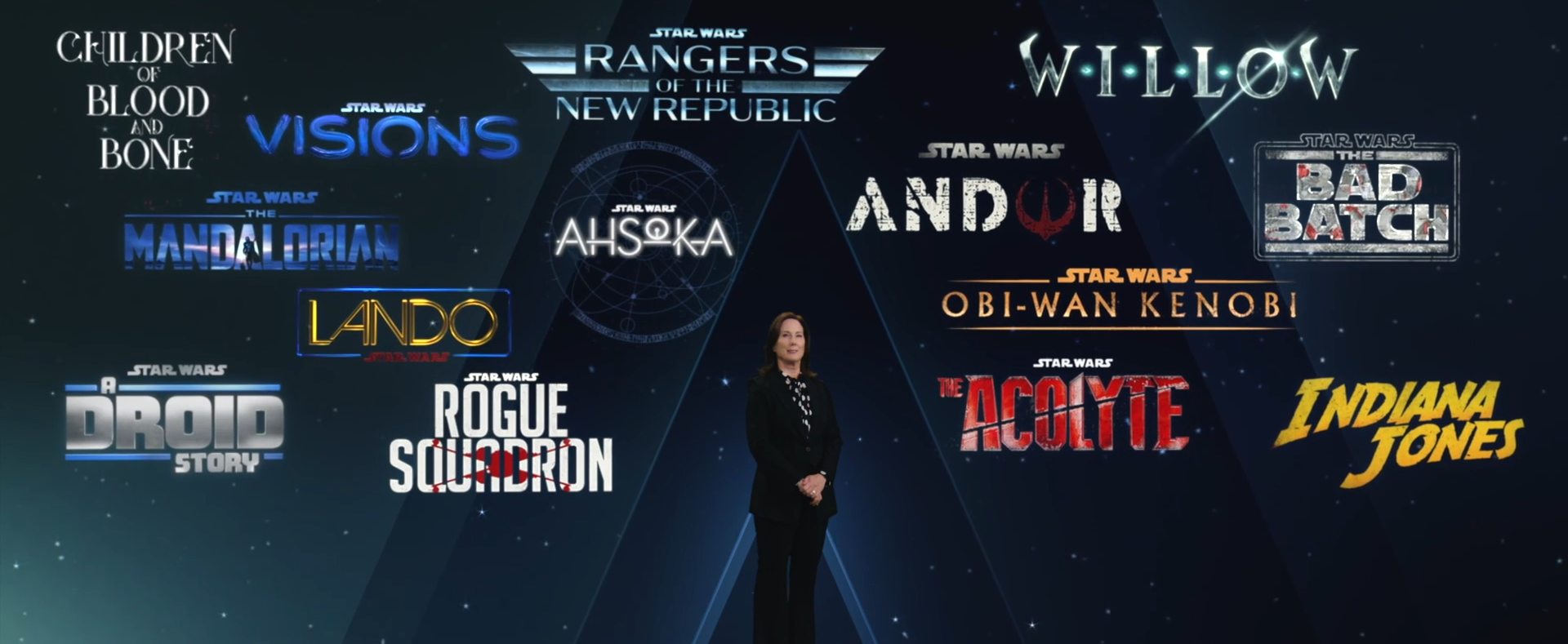
Before the launch of The Mandalorian in November 2019, Lucasfilm revealed at the D23 Expo event in July 2019 that the company was developing Obi-Wan Kenobi](/article/obi-wan_kenobi(television_series)), a live-action TV series starring Ewan McGregor reprising his role as Jedi Master Obi-Wan Kenobi, set after the events of Revenge of the Sith. On February 21, 2020, The Final Season of Star Wars: The Clone Wars premiered on Disney+ with twelve episodes, culminating in the finale's release on May 4.
Guillermo del Toro had a Star Wars film in development that explored Jabba the Hutt's rise to power, but it was ultimately canceled. Announced at Star Wars Celebration Chicago as Project Luminous, Star Wars: The High Republic was unveiled on February 24, 2020, as a vast multi-media project encompassing novels, comics, audio plays, and more, establishing and expanding the High Republic Era set before the prequel films. Divided into three phases, each with three waves, The High Republic includes a wealth of storytelling material. A new animated spin-off series of The Clone Wars, Star Wars: The Bad Batch, was announced on July 13, 2020.
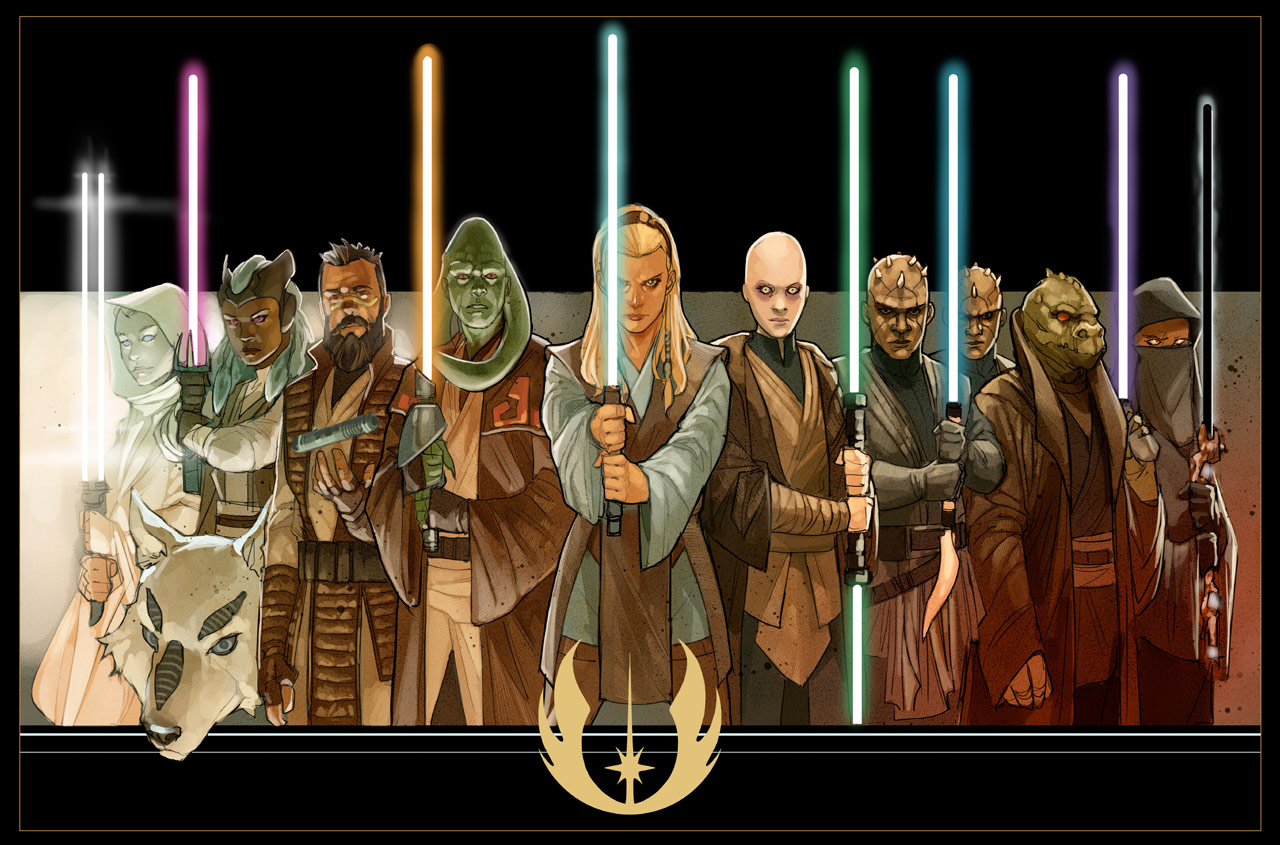
Following the success of The Mandalorian and during the release of The Mandalorian Season Two, Disney held the Disney Investor's Day 2020 event on December 10, showcasing various upcoming projects across the entire company. Kennedy led the Lucasfilm segment of the presentation, revealing a host of new live-action and animated projects, including both films and series. Kennedy announced The Mandalorian spin-off series Rangers of the New Republic and Ahsoka, The Acolyte, Lando, A Droid Story, Star Wars: Visions, Rogue Squadron, and a film by Taika Waititi. Just eight days after the Investor's Day event, on December 18, the finale of the second season of The Mandalorian revealed The Book of Boba Fett, the next chapter in the Mandalorian saga.
Star Wars: The Bad Batch premiered on May 4, 2021, with the hour-long episode "Aftermath." The season, consisting of sixteen episodes, focused on Clone Force 99 during the fall of the Galactic Republic and the rise of the Galactic Empire. On August 5, a second season of The Bad Batch was confirmed. Later that year, on September 22, Star Wars: Visions premiered with nine short anime films, marking the first Star Wars project in an anime format.

The Book of Boba Fett was released on December 29, 2021, and centered on the legendary bounty hunter Boba Fett. Initially, before The Mandalorian, Lucasfilm had plans to feature the bounty hunter in a feature film developed by James Mangold, but the film was put on hold. Eventually, Favreau and Filoni took up Boba Fett's story, officially reintroducing the titular bounty hunter in "Chapter 9: The Marshal" and fully in "Chapter 14: The Tragedy," with the latter episode directed by Robert Rodriguez.
Impressed with Rodriguez's direction on the episode, Favreau brought him on board to executive produce The Book of Boba Fett alongside himself and Filoni. Filming reportedly commenced by late November 2020 and brought in titular characters such as Ahsoka Tano and Luke Skywalker, who had appeared in the second season of The Mandalorian.
In 2017, Obi-Wan Kenobi actor Ewan McGregor was invited to the El Capitan Theatre in Los Angeles for a screening of every Star Wars film. During the event, he was asked if he would be interested in introducing a new Star Wars film, and McGregor recalled suddenly feeling that he genuinely wanted to continue playing Kenobi. By this time, younger audiences who had grown up with the prequel films enjoyed them, and McGregor found himself realizing that he enjoyed playing Obi-Wan. Around this period, McGregor was frequently asked in interviews if he would ever consider playing Obi-Wan Kenobi again, to which he always responded affirmatively. In 2018, Kiri Hart, then Vice President of Development at Lucasfilm, inquired whether McGregor was sincere and authentic in his interest, to which McGregor replied that he would be happy to perform as Obi-Wan.
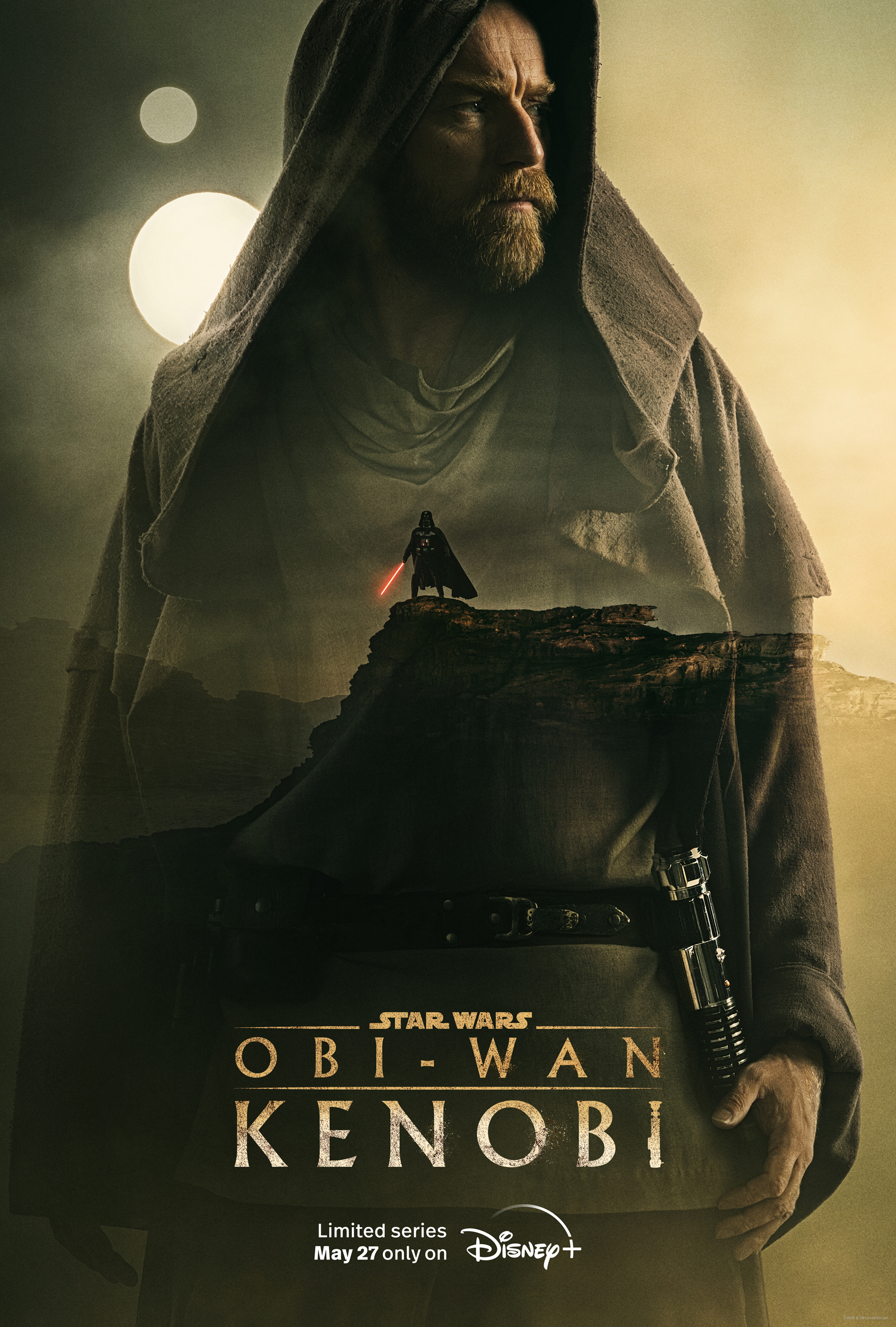
Initially, the plan centered around crafting a film centered on Obi-Wan Kenobi's narrative, with Stephen Daldry slated to direct and McGregor taking on executive production duties. Subsequently, the film evolved into an Obi-Wan TV series, intended to be a key component of Lucasfilm's fresh endeavors for the Disney+ streaming platform. At this juncture, Daldry stepped away, and Deborah Chow, a director known for her work on The Mandalorian, joined the project to guarantee the series maintained a genuinely cinematic quality. Early story iterations omitted Darth Vader, sparking a familiar debate within Lucasfilm: To what degree should established characters be utilized, and how much should they be reserved for future use? While shaping the story, Lucasfilm deliberated on whether incorporating Vader into a narrative about Obi-Wan set after Revenge of the Sith would detract from their encounter in A New Hope, or whether it would enrich that scene. Michelle Rejwan, Kenobi producer and Senior Vice President of Live Action Development and Production, affirmed that these discussions are routine.
In the autumn of 2019, Director Chow approached Hayden Christensen, the actor who portrayed Anakin Skywalker, about reprising his role as Vader in Star Wars, an offer he ultimately accepted. While Chow championed a rematch between Vader and Kenobi, allegedly at the urging of Dave Filoni, Lucasfilm's Story Group debated the merits of pursuing that direction. Consequently, soundstages booked in England were relinquished, and the storyline underwent further internal examination, leading to concerns among fans about the show's potential cancellation. By March 2020, the decision to include Vader in Obi-Wan Kenobi was definitively made.
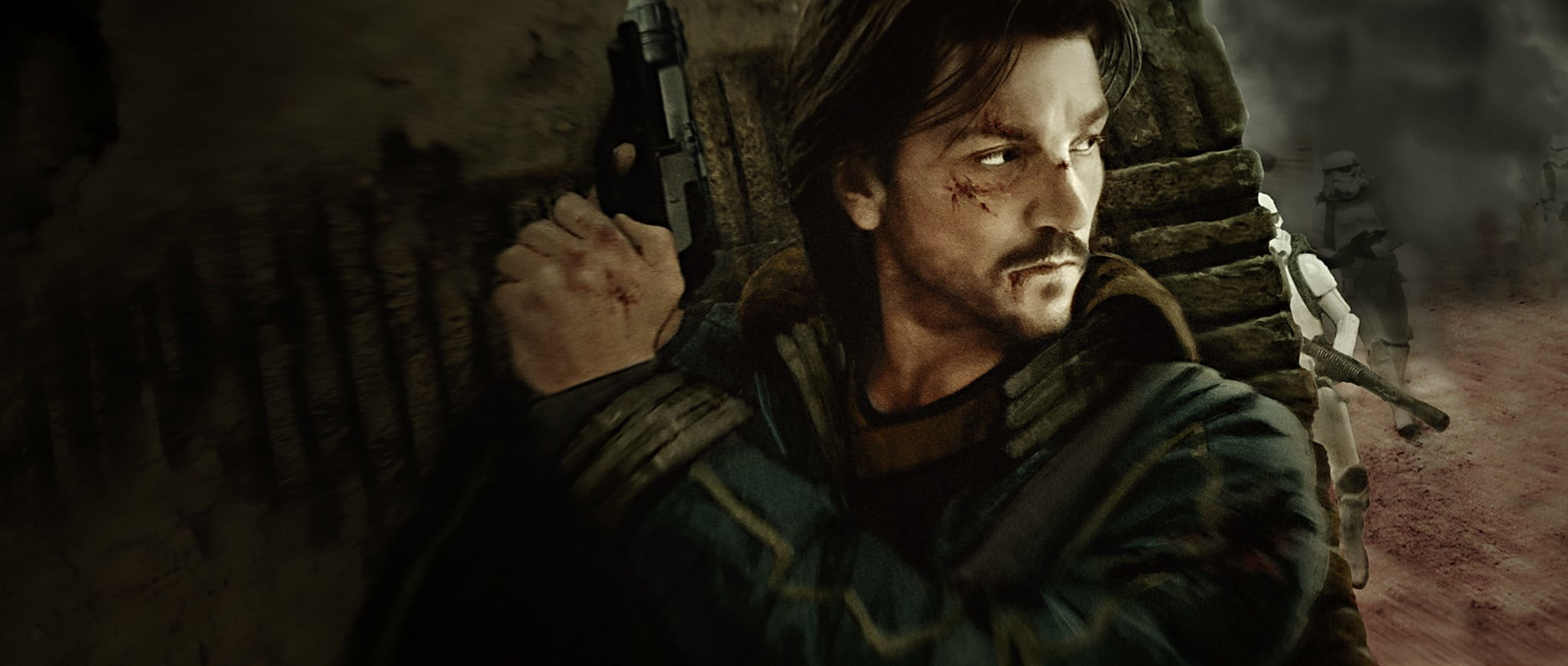
Around the year 2019, Diego Luna, the actor who portrayed [Cassian Jeron Andor](/article/cassian_jeron_andor], the spy captain for the Rebel Alliance in Rogue One, received a phone call from Tony Gilroy, who had previously revised Rogue One's script during reshoots, while Luna was situated in Mexico City. During this conversation, Gilroy unveiled his intentions for a new series centered around Andor's character. Officially unveiled during Investor's Day 2020, Andor had its initial confirmation on November 8, 2018. By December 3, 2020, filming in London was already in progress, concluding in September 2021. The first season of Andor was launched towards the conclusion of summer in 2022, while production for the second season was already underway by May of that same year.
Also revealed at Investor's Day 2020 as a spin-off series from The Mandalorian, Ahsoka made its debut in August 2023. The series revolves around Ahsoka Tano, the character introduced in The Clone Wars, and is both written and produced by Dave Filoni. Filoni, who co-created the character with George Lucas, directs the series towards the quest to locate Grand Admiral Thrawn following her live-action debut in The Mandalorian and subsequent appearance in The Book of Boba Fett. Filoni has indicated that Star Wars: Ahsoka will present a cohesive narrative moving toward a specific objective, rather than individual, self-contained episodes. The commencement of filming for the series took place on May 9, 2022.

In this fresh epoch of Star Wars, Lucasfilm will necessitate the introduction of novel actors, characters, and eras to broaden the established canonical timeline. One such innovative endeavor is the mystery thriller The Acolyte, situated within the newly established High Republic Era, initially introduced through the Star Wars: The High Republic multimedia initiative. The inaugural season of The Acolyte premiered in June 2024 and concluded its broadcast in July 2024. Leslye Headland had been nurturing the development of The Acolyte since 2020, notably within her own residence. Another fresh Star Wars series, operating under the production title "Grammar Rodeo," is also in development at Lucasfilm, with Jon Watts serving as executive producer and Christopher Ford as the writer. Lucasfilm characterizes the series as a quintessential coming-of-age adventure. The series of animated shorts titled Star Wars: Tales of the Jedi was initially announced at Celebration Anaheim on April 27, 2022.
Celebration Anaheim began on May 26, initiating a wave of fresh announcements and revelations. "Grammar Rodeo" was unveiled as Star Wars: Skeleton Crew, and Andor debuted its initial teaser trailer. On May 27, Star Wars Jedi: Survivor was formally revealed, accompanied by a corresponding teaser.
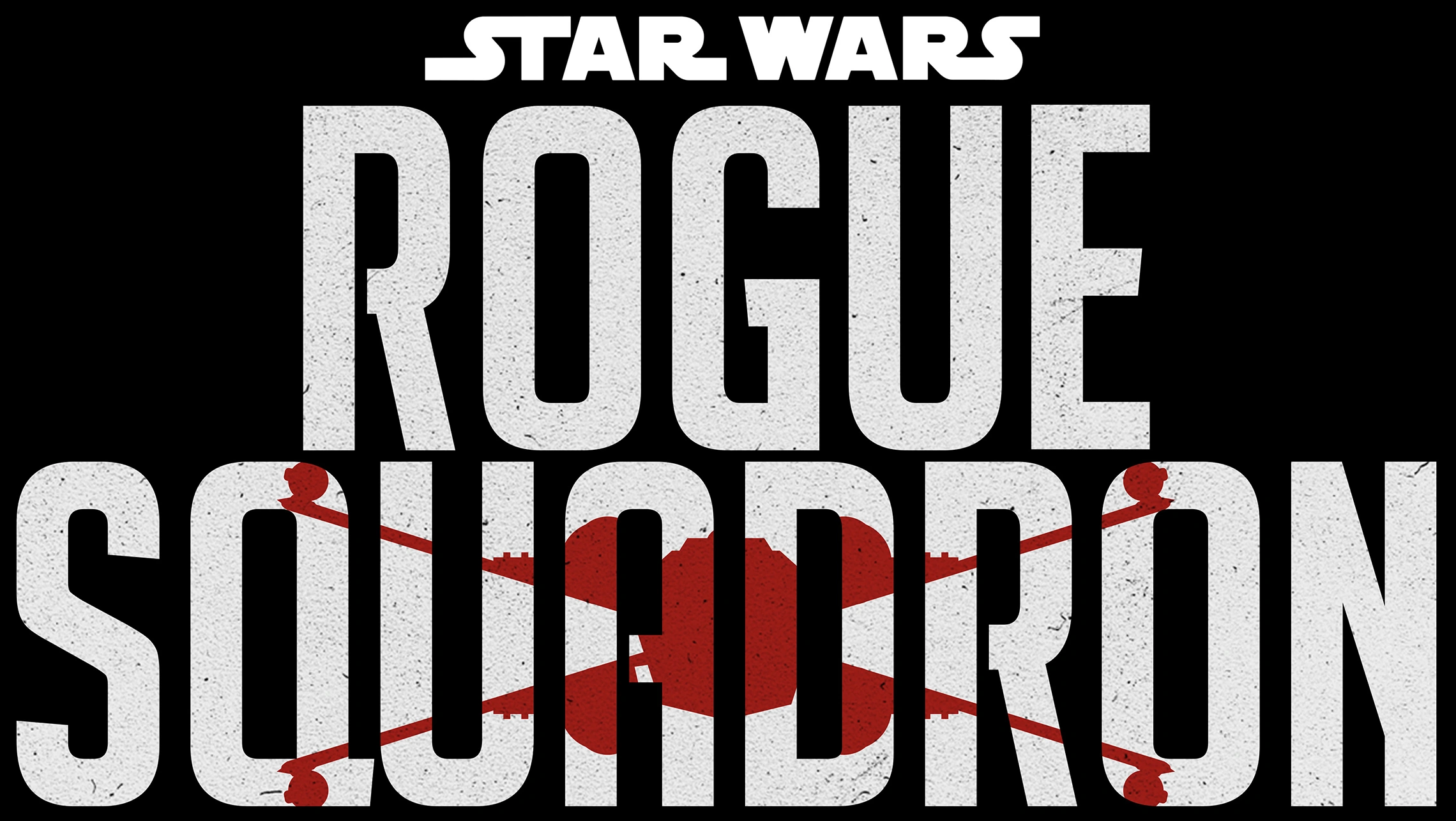
Given Lucasfilm's shift towards television series, the company's return to theatrical releases may not mirror the consistent output of previous years. President Kathleen Kennedy mentioned that the company possesses a strategic plan for its theatrical ventures, with the Star Wars film by Krysty Wilson-Cairns and Taika Waititi potentially being the first to be released, succeeded by Rogue Squadron from Patty Jenkins. In May 2022, Kathleen Kennedy verified in an interview with Vanity Fair, that Rogue Squadron had been placed on hold by Lucasfilm. Despite the announcement of a Star Wars film helmed by Marvel CEO Kevin Feige on October 2, 2019, Kennedy asserted that no such project existed.
Reports surfaced in February 2020 indicating that J.D. Dillard was engaged in the development of a new Star Wars film; however, by November 8, 2022, he disclosed that his Star Wars project was no longer in active development. Furthermore, the trilogy of Star Wars films from Rian Johnson, the director of The Last Jedi, has been postponed, as Johnson remains committed to working on multiple Knives Out films for Netflix. Kennedy expressed her reluctance to employ the term "trilogies" with Star Wars at present, emphasizing that the franchise is now more centered on enduring storytellers, and that she now needs to enlist feature filmmakers who share her perspectives.
During Celebration Europe, on April 7, 2023, the announcement was made that three forthcoming Star Wars films were in the works. One film, to be directed by James Mangold, will delve into the origins of the Jedi, set prior to the events of The Phantom Menace. Another, directed by Dave Filoni, will concentrate on the era of the New Republic, occurring between the events of Return of the Jedi and The Force Awakens, and will weave together the narratives presented in The Mandalorian, The Book of Boba Fett, and Ahsoka. The final film announced, to be directed by Sharmeen Obaid-Chinoy, will unfold after the events of The Rise of Skywalker, and will center on Rey's efforts to establish a new Jedi Order.
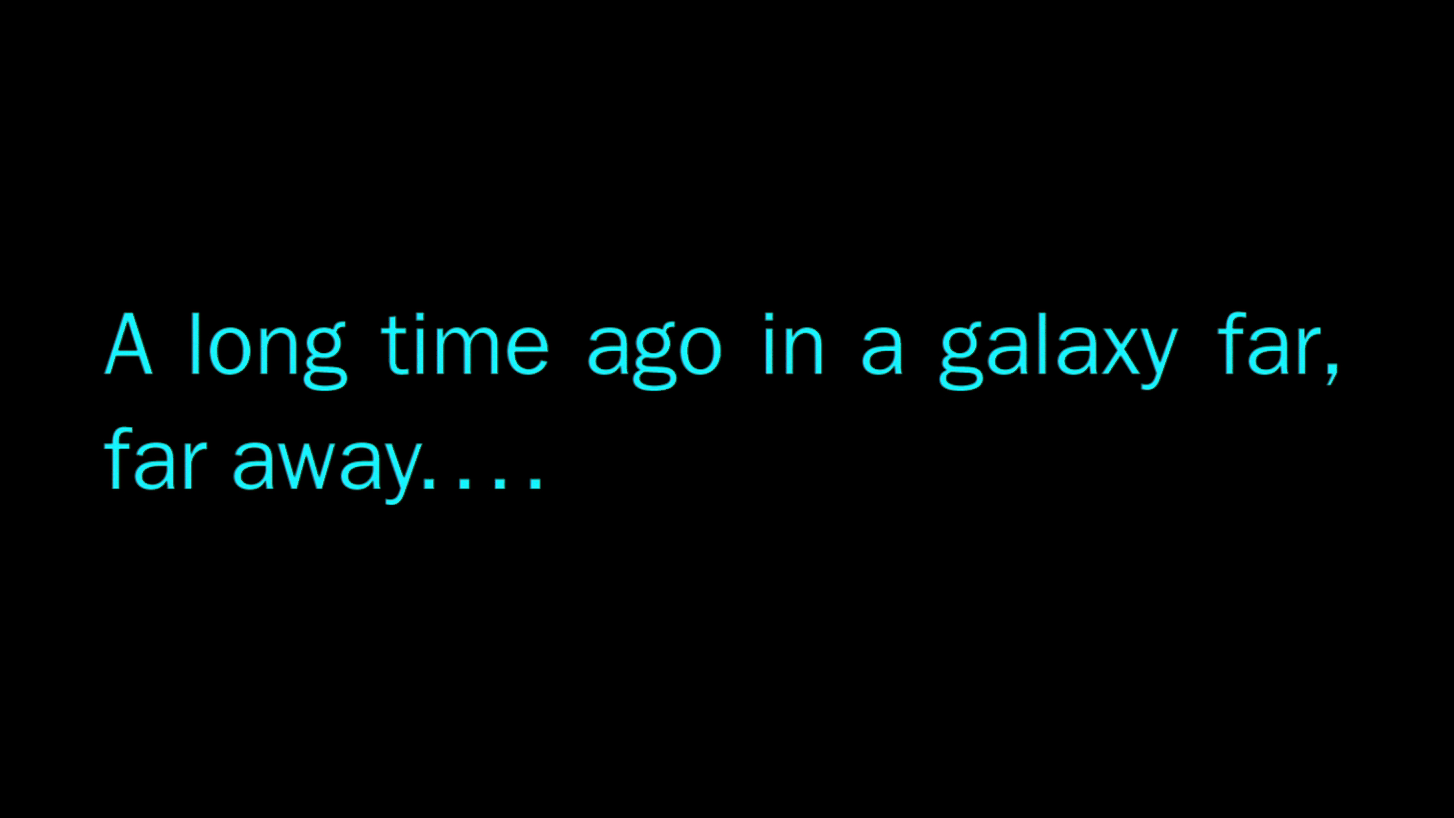
The phrase "A long time ago in a galaxy far, far away.…," which initiates each Star Wars film, serves as the singular point of reference for defining the Star Wars galaxy in relation to the real world. It echoes the conventional fairy tale opening "Once upon a time, in a land far, far away…" and analogous variations. This may suggest that the films are intended to be perceived as futuristic myths, rather than a literal representation of events occurring in the past. Lucas deliberately maintained the ambiguity of these details, leaving them open to individual interpretation.
The saga portrays an "ancient" galactic civilization spanning thousands of years. The setting exists independently of Earth, the Milky Way Galaxy, or reality, thereby affording it greater creative latitude. The Star Wars galaxy prominently features humans resembling those from Earth. According to the Expanded Universe, their civilization achieved space travel, terraforming, the construction of ecumenopoleis, and the establishment of space colonies 200,000 years "ago."
The term Star Wars originally denoted the Galactic Civil War depicted in the original trilogy. However, when considering the prequels (centered on the Invasion of Naboo and the Clone Wars), the sequels (depicting the First Order-Resistance War), and the Expanded Universe, these occurrences represent merely a segment of the millennia-long conflict between the Sith and the Jedi/Galactic Republic.
Star Wars also integrates scientific concepts with supernatural elements that strongly resonate with epic narratives and fairy tales (e.g., magic, knights, witches, princes, and "whimsical" alien species such as Ewoks, Wisties, etc.).
While the scope of Star Wars history encompasses numerous millennia within the documented Star Wars lore and exceeds 36,100 years across all fictional works produced to date (from Dawn of the Jedi to Star Wars: Legacy), the films span only two generations.
Subsequent novels from a series known as The New Jedi Order broadened the Star Wars setting by introducing alien entities known as the Yuuzhan Vong, originating from a separate galaxy, a revelation that surprised some fans. Prior to this series, virtually all species and events were confined to a single galaxy.
The core concept for Star Wars took shape in the early 1970s and underwent extensive modifications, yielding abundant material for the films. The original Star Wars film (Episode IV) premiered in 1977, whereas its novelization was released six months prior, in 1976. The sixth Star Wars film (Episode III) was released in 2005. Initially, the plan involved nine films organized into three trilogies (some accounts suggest twelve films in four trilogies); however, Lucas has stated that he has no intention of producing additional Star Wars films following Episode III.
On October 30, 2012, The Walt Disney Company, concurrent with the announcement of its acquisition of Lucasfilm, unveiled plans to produce a new series of films, commencing with Star Wars: Episode VII The Force Awakens in 2015, alongside proposals for supplementary films. George Lucas declared that he would not direct the films but would serve as a creative consultant.
All of the initial films were filmed at, among other locations, Elstree Studios. Episode I was filmed at Leavesden Studios, and the subsequent prequels were filmed in Sydney, Australia. Tunisia has been utilized as the filming location for scenes set on the desert planet Tatooine.
Collectively, the first nine films in the primary saga have generated a cumulative total of $8,789,255,249 worldwide in box office revenue. An eighth film, titled Star Wars: Episode VIII The Last Jedi, was released in 2017, followed by a ninth, Star Wars: Episode IX The Rise of Skywalker.
Films by release order:
- Star Wars: Episode IV A New Hope ( May 25 , 1977 )
- Star Wars: Episode V The Empire Strikes Back ( May 21 , 1980 )
- Star Wars: Episode VI Return of the Jedi ( May 25 , 1983 )
- Star Wars: Episode I The Phantom Menace ( May 19 , 1999 )
- Star Wars: Episode II Attack of the Clones ( May 16 , 2002 )
- Star Wars: Episode III Revenge of the Sith ( May 19 , 2005 )
- Star Wars: Episode VII The Force Awakens ( December 18 , 2015 )
- Star Wars: Episode VIII The Last Jedi ( December 15 , 2017 )
- Star Wars: Episode IX The Rise of Skywalker ( December 20 , 2019 )
George Lucas has consistently refined the original trilogy. For the Special Editions of Episodes IV through VI, the films underwent extensive restoration and cleanup, and Lucas seized this opportunity to implement several changes, incorporating previously excised scenes and new visual effects. The Special Editions were released in theaters in early 1997 and on VHS later that year. Further modifications were introduced for the films' inaugural DVD release in September 2004. In 2006, Lucas ultimately released the original trilogy in unaltered form on DVD.
At a ShoWest convention in 2005, George Lucas showcased new technology and announced his intention to release all six films in a novel 3D film format, commencing with A New Hope in 2007. While this did not materialize, on September 28, 2010, StarWars.com announced the 3D release of Star Wars: Episode I The Phantom Menace in theaters in 2012.
Notwithstanding Disney's acquisition of Lucasfilm Ltd. in 2012 and the rights to release all subsequent Star Wars films, Fox was slated to retain original distribution rights to A New Hope, which they co-produced and co-financed, in perpetuity across all media worldwide. Fox was also to retain theatrical, nontheatrical, and home video rights globally for the franchise's five subsequent films, which Lucasfilm produced and financed independently, until May 2020, at which point ownership was to transfer to Disney. This intricate relationship between Fox and Disney, particularly concerning Fox's perpetual rights to Episode IV, was anticipated to pose a challenge for any future boxed set encompassing all nine films. On December 14, 2017, The Walt Disney Company announced its acquisition of the majority of Fox's parent company, 21st Century Fox, including the film studio and all distribution rights to A New Hope.
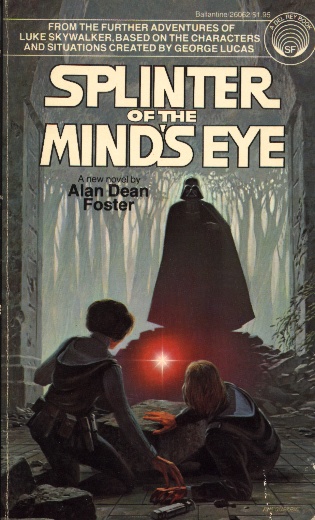
The Expanded Universe (or EU) serves as a continuation of the films, assuming a significant role in the overarching storyline. Readers can explore books set during the prequel era, between the films, or following Episode VI. Numerous books also delve into the lives of Han Solo and Lando Calrissian in the period preceding the films. Books are even dedicated to the briefly featured Wedge Antilles. Prominent characters within the EU include the twins Jaina and Jacen Solo, former Emperor's Hand Mara Jade, the pilot-turned-Jedi Corran Horn, and the tactical mastermind Grand Admiral Thrawn.
The books situated during or after the Star Wars original trilogy chronicle the journeys of Luke Skywalker, Princess Leia, Han Solo, and other secondary characters, as well as the evolution of the New Republic. The Truce at Bakura by Kathy Tyers is the first book chronologically set after Return of the Jedi, but the first Expanded Universe story written was Alan Dean Foster's Splinter of the Mind's Eye.
Authors in the Expanded Universe frequently provided context for details presented in the films, elucidating, for instance, that the scarcity of non-humans depicted in the Galactic Empire (relative to their numbers in the Rebellion) stemmed from the prevalence of xenophobia among Imperials.
The earliest Expanded Universe stories chronologically are those in Dawn of the Jedi. Novels such as the Darth Bane Trilogy, The Old Republic: Revan, and Knight Errant feature both the Galactic Republic and the Jedi Order thousands of years before the rise of the Galactic Empire.
Thousands of years later, series about the training of Obi-Wan Kenobi and the Naboo Crisis introduce the characters and situations that form the backbone of the story told in the films. The story then revolves around the Skywalker family and their friends and adversaries. The Skywalkers are involved in every important event from that point forward. They go through numerous wars, the last known being Cade Skywalker and the Second Imperial Civil War.
Star Wars, the NPR radio adaptation (1981), was followed by adaptations of the next two films of the series. These adaptations were written by science-fiction author Brian Daley, who also wrote three novels detailing the adventures of Han Solo and Chewbacca prior to their appearance in Star Wars: Episode IV A New Hope.
There are six official feature-length works besides the primary films of the three trilogies:
- The Star Wars Holiday Special ( 1978 )
- Caravan of Courage: An Ewok Adventure ( 1984 )
- Ewoks: The Battle for Endor ( 1985 )
- Star Wars: The Clone Wars ( 2008 )
- Rogue One: A Star Wars Story ( 2016 )
- Solo: A Star Wars Story ( 2018 )
The first three of these are live-action, and were originally made for TV, though the 1984 Ewok film was shown in theaters in some locations outside the U.S. Star Wars: The Clone Wars is an animated theatrical feature kicking off the 2008 TV series. Rogue One and Solo are live-action standalone films.
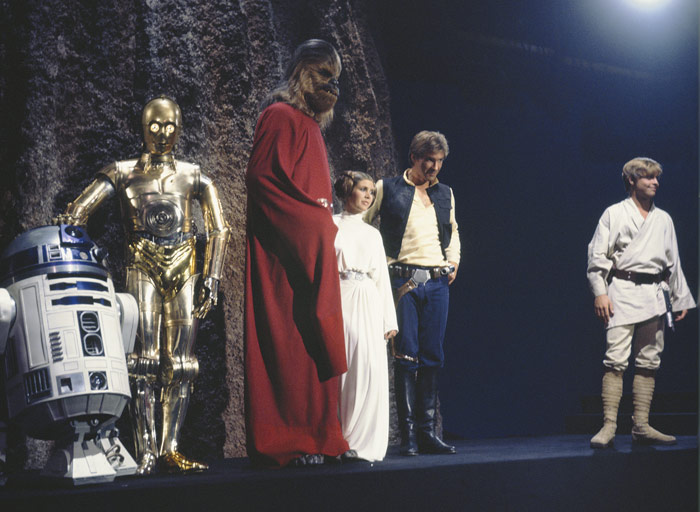
The Star Wars Holiday Special gained notoriety for showcasing Boba Fett's initial appearance. A previously minor element, the Wookiee food wookiee-ookiees evolved into a cult emblem within the Star Wars fan community, inspiring variations on its name such as wookiee-cookiees (a Star Wars–themed dessert).
The phrase "Wookiee hooky" was employed by media outlets to denote elevated absenteeism rates associated with viewing a newly released Star Wars film.
Furthermore, other filmmakers unaffiliated with Lucasfilm have produced films that pay homage to, document, parody, or informally extend the Star Wars universe.
Mel Brooks' Spaceballs (1987) satirizes Star Wars and various other science-fiction works.
The Official Star Wars Fan Film Awards represents a Lucasfilm-sponsored competition featuring short films created by Star Wars enthusiasts that explore, reference, and parody the Star Wars phenomenon.
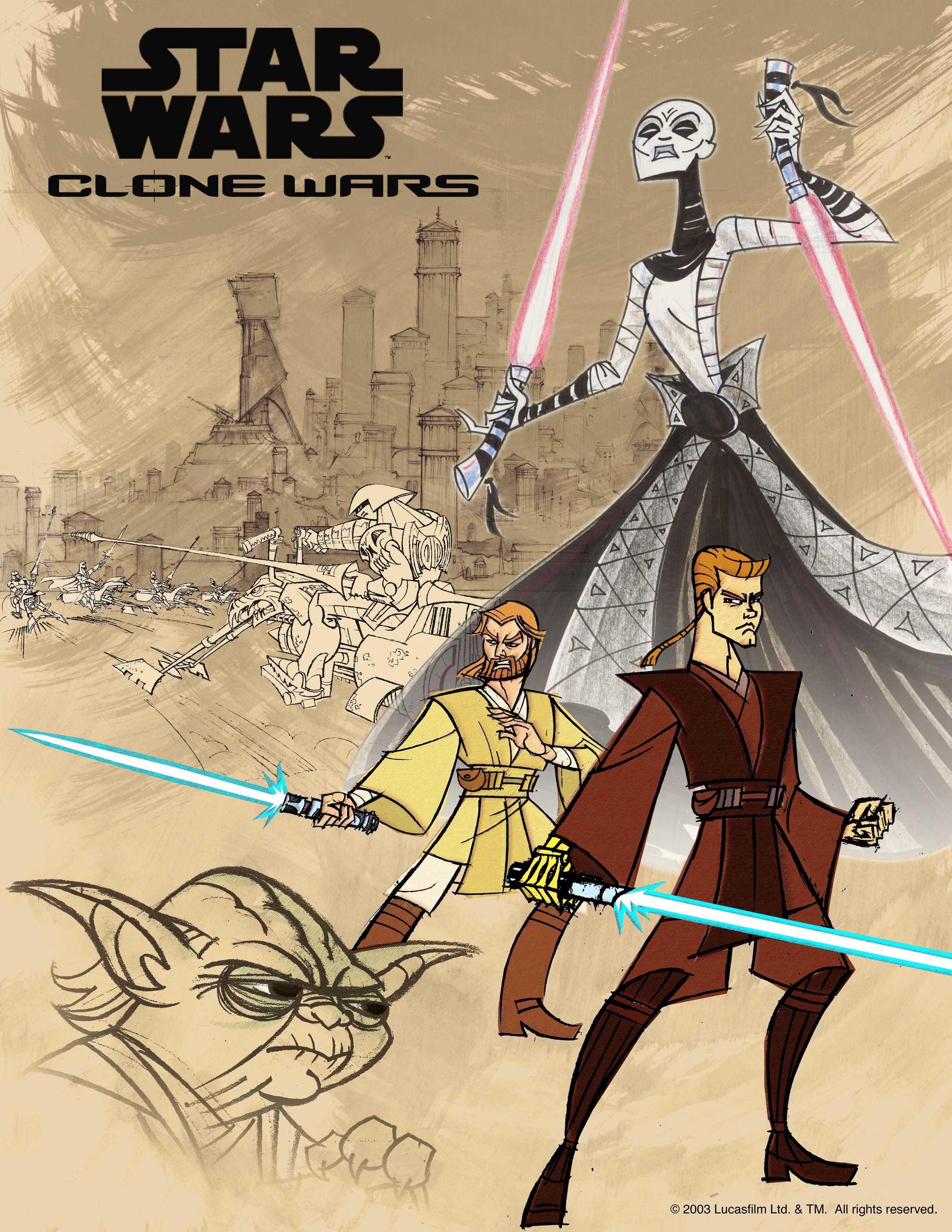
Animated Series by release order:
- Star Wars: Droids ( 1985 ) - First released in 1985.
- Ewoks ( 1985 ) - Also released in 1985.
- Star Wars: Clone Wars ( 2003 ) - Debuted in 2003.
- Star Wars: The Clone Wars ( 2008 ) - Premiered in 2008.
- Star Wars Rebels ( 2014 ) - Aired starting in 2014.
- Star Wars Forces of Destiny ( 2017 ) - Began airing in 2017.
- Star Wars Resistance ( 2018 ) - Launched in 2018.
- Star Wars: The Bad Batch ( 2021 ) - Started broadcasting in 2021.
- Star Wars: Visions ( 2021 ) - Became available in 2021.
- Tales (2022) - Released in 2022.
- Star Wars: Young Jedi Adventures ( 2023 ) - Came out in 2023.
Animation is another element of the Star Wars universe. The initial two animated series were launched in 1985, with Clone Wars following in 2003. The Clone Wars then came in 2008, Rebels in 2014, Forces of Destiny in 2017, Resistance in 2018, The Bad Batch in 2021, and Tales in 2022. Ewoks chronicled the escapades of the Ewoks leading up to Return of the Jedi. Droids depicted the adventures of C-3PO and R2-D2 taking place between Star Wars: Episode III Revenge of the Sith and A New Hope.
Animated Series by release order:
- The Mandalorian ( 2019 )
- The Book of Boba Fett ( 2021 )
- Obi-Wan Kenobi ( 2022 )
- Andor ( 2022 )
- Ahsoka ( 2023 )
- The Acolyte ( 2024 )
- Skeleton Crew ( 2024 )
Back in 1984 and 1985, George Lucas served as executive producer for a pair of live-action TV episodes belonging to a short-lived series known as Ewok Adventures. These stories unfold prior to the Battle of Endor and center around the Towani family's brief experiences after their stranding on Endor. The two episodes were titled Caravan of Courage: An Ewok Adventure and Ewoks: The Battle for Endor, with Warwick Davis reprising his role as the brave Ewok Wicket W. Warrick. A notable inconsistency in this series was Wicket's ability to speak English, a skill he never demonstrated in Return of the Jedi.
On November 9, 2017, Disney's CEO Bob Iger announced that a fresh live-action Star Wars television program, called The Mandalorian, would be available on Disney, the new streaming service planned for a 2019 launch.
In addition to The Mandalorian, several other Star Wars television projects are being developed for Disney+, including the television series Obi-Wan Kenobi, Andor, and The Acolyte created by Leslye Headland, the mind behind Russian Doll.
Star Wars-related fiction existed even before the initial movie's release. The novelization of A New Hope (penned by Alan Dean Foster but credited to George Lucas) was published a few months ahead of the film's debut. Foster also authored the first original Star Wars novel, Splinter of the Mind's Eye, which hit shelves in 1978, marking the beginning of a highly successful literary spin-off franchise.
The six Star Wars films have served as the foundation for over a hundred novels. These novels have received authorization from Lucasfilm and were initially published by Bantam Books (with a few early releases by Ballantine), although Del Rey currently holds the contract once more. The narratives in these books span from thousands of years before The Phantom Menace to several generations after Return of the Jedi. The books sanctioned by Lucas are written by fans of the films and form part of a collection known as the Expanded Universe. The initial books considered part of the Expanded Universe began to surface in the late 1970s.
The majority of the written novels are set after the events depicted in the films, with a select few taking place between the movies and an increasing number set before the films. Some fans find these stories more captivating, as they provide narratives for numerous characters who only have minor roles or brief appearances in the movies. A particularly noteworthy example is Steve Perry's Shadows of the Empire, which is set between The Empire Strikes Back and Return of the Jedi. It not only focuses on relatively minor characters but also bridges certain events between the two films.
Furthermore, certain elements initially introduced in the Expanded Universe were later incorporated into the films. These include Coruscant and Aayla Secura.
Beyond the narrative books, there are also reference books that delve into details about the Star Wars universe in a nonfiction style, revealing information that wouldn't fit into a story. Examples include The Wildlife of Star Wars: A Field Guide, Inside the Worlds of, and the Visual Dictionaries.
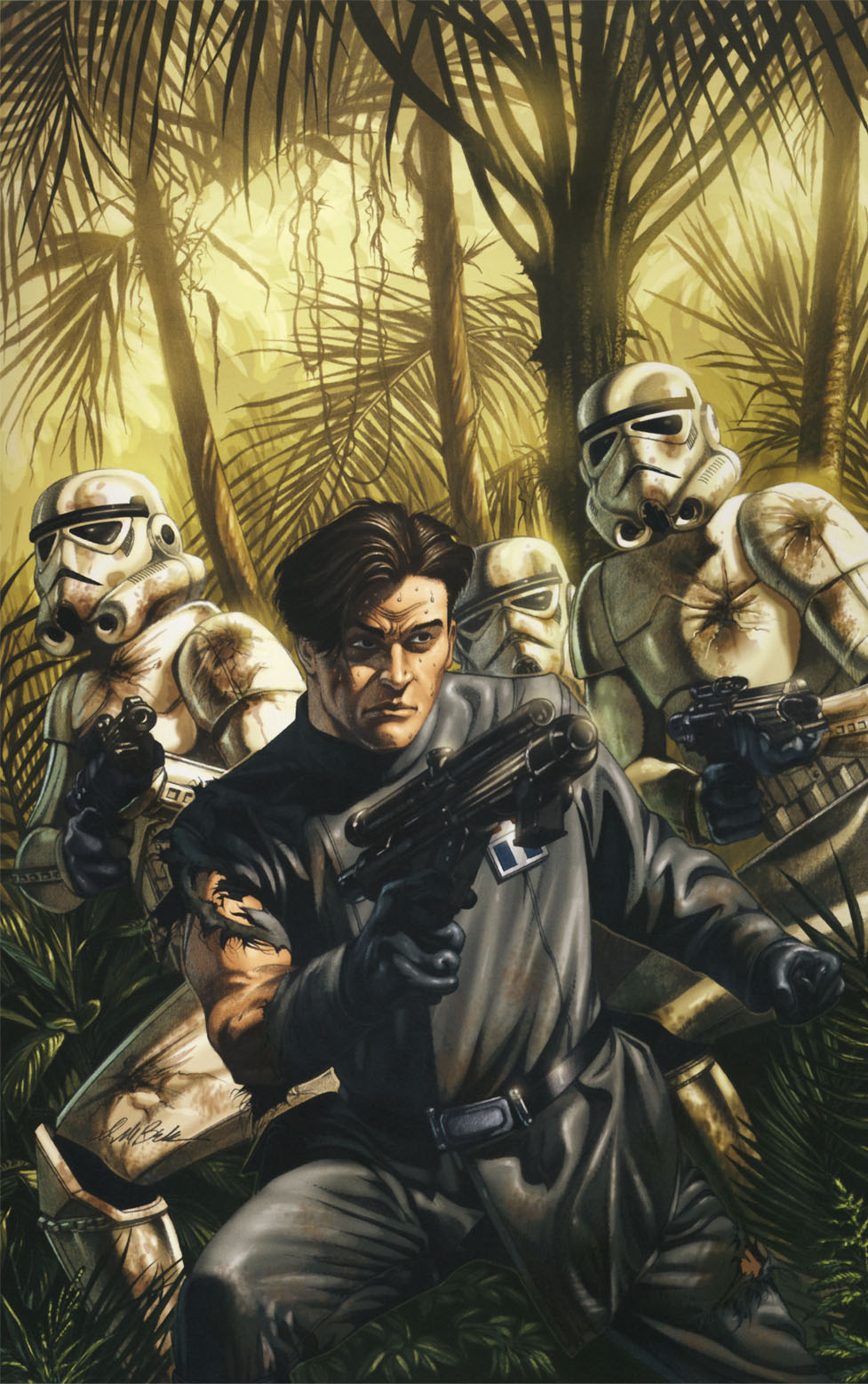
Marvel Comics released adaptations of the original trilogy, along with a Star Wars comic book series that ran from 1977 to 1986, encompassing a total of 107 issues and 3 annuals. A diverse group of creators contributed to this series, including Archie Goodwin, Howard Chaykin, Al Williamson, Carmine Infantino, Walter Simonson, Michael Golden, Chris Claremont, Whilce Portacio, Mary Jo Duffy, and Ron Frenz. During the 1980s, Marvel also published the short-lived series Ewoks and Droids, based on the Saturday-morning cartoons, as part of their Star Comics line aimed at young children.
Star Wars also appeared as a daily newspaper comic strip from 1979 to 1984, primarily written by Archie Goodwin and illustrated by Al Williamson.
Starting in the 1990s, Dark Horse Comics has published a substantial collection of original adventures within the Star Wars universe. As of 2006, these mainly include Star Wars: Republic, Star Wars: Empire, Star Wars Tales, Star Wars: Jedi, Star Wars: Knights of the Old Republic, and Star Wars: Legacy. Dark Horse has also released collections of the Marvel series in seven volumes and the comic strip as Classic Star Wars.
Since 1983, over 120 video games have been launched under the Star Wars banner, starting with Star Wars: The Empire Strikes Back, which was released for the Atari 2600 by Parker Brothers.
The initial games inspired by the franchise were made available on the Atari 2600. In the first, The Empire Strikes Back (1982), players piloted a snowspeeder during the Battle of Hoth, tasked with destroying AT-AT walkers. Despite its simplicity, the game effectively captured the essence of the movie within the limits of the available technology. Several other games followed, such as Return of the Jedi: Death Star Battle (1982), where the player took control of the Millennium Falcon on a mission to destroy the second Death Star, and Jedi Arena (1983), which was the first attempt to simulate a lightsaber duel (clearly inspired by the scene in A New Hope where Luke Skywalker trains with a seeker). Also in 1983, Star Wars was released, based on A New Hope. In this game, the player assumes the role of Luke Skywalker towards the film's climax, battling through numerous TIE fighters in an effort to destroy the first Death Star.
Due to the video-game market crash of 1983, which devastated the home-console market, no further games based on the franchise were released until 1991. In that year, the platformer Star Wars was launched for both the NES and Game Boy. A year later, Star Wars: The Empire Strikes Back repurposed the engine with the storyline of the saga's fifth episode. It wasn't until 1992 that Super Star Wars was released for the SNES (the Super prefix was commonly used in remakes of 8-bit games), followed by the remaining games in the trilogy: Super Star Wars: Empire Strikes Back (1993) and Super Star Wars: Return of Jedi (1994).
Other early titles include the game Star Wars for the Nintendo Entertainment System (published by JVC) and three other titles for the Atari 2600.
Video game industry leader Atari developed arcade games inspired by the original trilogy, starting with Star Wars and The Empire Strikes Back, both of which were flight-simulator-style games that utilized vector graphics. The third, Return of the Jedi, employed more conventional raster graphics and a "3/4" perspective.
Star Wars: X-Wing (1993) marked the arrival of the "new generation" of PC games released by LucasArts. It returned to the space-fighter combat gameplay that had been absent since the Atari arcade games. Players typically assumed the role of a pilot in the Rebel Alliance, completing various objectives that culminated in the destruction of the Death Star. This game spawned sequels, including Star Wars: TIE Fighter and Star Wars: X-Wing Alliance.
The longest-running series of computer games is the groundbreaking Dark Forces series. This first person shooter series began in 1995 with Star Wars: Dark Forces. The next installment was Star Wars: Jedi Knight: Dark Forces II, which allowed players to play as a Jedi. The third game in the Dark Forces series, Star Wars: Jedi Knight II: Jedi Outcast, shifted its focus towards a third-person Jedi adventure compared to its predecessors. The fourth and final release was Star Wars: Jedi Knight: Jedi Academy, which initially started as an expansion pack for Jedi Outcast but evolved into a standalone game.
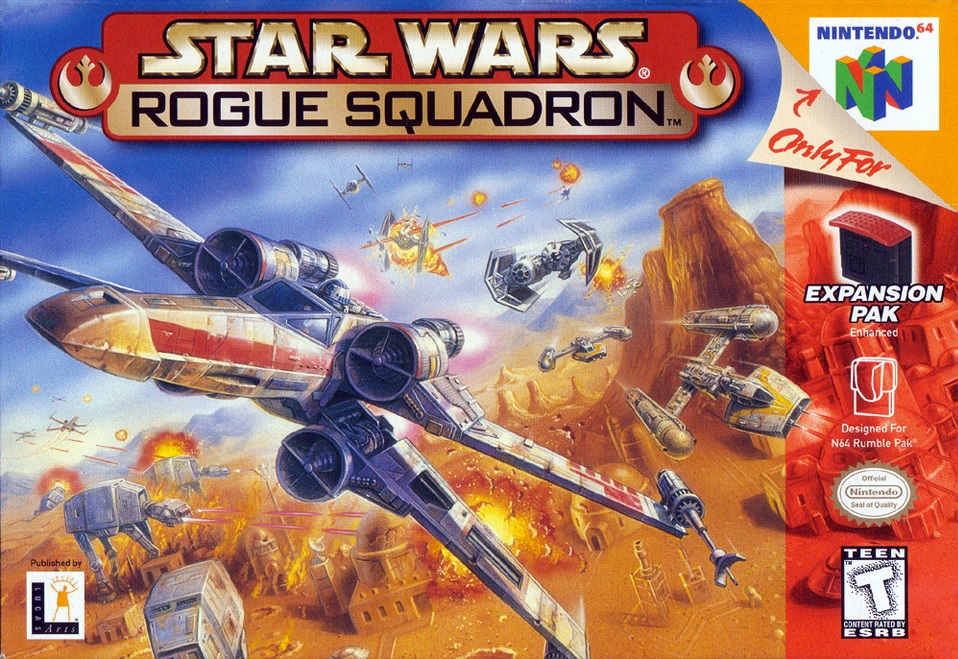
Another enduring video-game series began with Star Wars: Rogue Squadron for the Nintendo 64 and continued with Star Wars: Rogue Squadron II: Rogue Leader and Star Wars: Rogue Squadron III: Rebel Strike for the Nintendo GameCube. The first title was also made available for PCs, and all were developed by Factor 5 and published by LucasArts. Rogue Squadron III included emulated versions of the original Atari Star Wars arcade games.
Star Wars: Knights of the Old Republic, released in 2003, received "Game of the Year" recognition from several prominent gaming magazines, websites, and more. A sequel, Star Wars: Knights of the Old Republic II: The Sith Lords, was launched for the Xbox in December 2004 and for the PC in February 2005. Bioware released a MMORPG sequel to Knights of the Old Republic I and II called Star Wars: The Old Republic on December 20, 2011, set approximately 300 years after the events of Knights of the Old Republic II.
Star Wars Galaxies, an MMORPG developed by Sony, was released on June 26, 2003 in the United States, November 7 in Europe, December 23, 2004 in Japan, and in 2006 in Australia. The game was set after the events of the Battle of Yavin, and allowed players to create characters of a variety of species and specializations (such as Bounty Hunter and Smuggler) and choose to ally themselves with the Rebel Alliance or the Galactic Empire.
Star Wars: Battlefront was released in 2004 and is a first-/third-person shooter game capable of online play where you can play in both trilogies, as all factions, in many different battlefields. Its sequels, Star Wars: Battlefront II, Star Wars Battlefront: Renegade Squadron and Star Wars Battlefront: Elite Squadron, were released in 2005, 2007, and 2009 respectively.
Star Wars: Republic Commando is a tactical shooter computer game featuring the elite commandos of Delta Squad and set during the Clone Wars. It was released on March 1, 2005.
Star Wars: Empire at War, a real-time strategy game, was developed by Petroglyph Games and released on February 16, 2006, and an expansion pack, Star Wars: Empire at War: Forces of Corruption, was released in 2007.
LEGO Star Wars is a LEGO spinoff series in which the characters of Star Wars and most other vehicles and objects are made of LEGO bricks. The second game of the series is LEGO Star Wars II: The Original Trilogy. The third game of this series, LEGO Star Wars: The Complete Saga, combines the first two games. LEGO Star Wars III: The Clone Wars is a LEGO version of the Clone Wars animated series, taking place during seasons 1 and 2.
Three role-playing games set in the Star Wars universe have been published: a d6-based game from West End Games, a Wizards of the Coast game using the d20 system on which their popular Dungeons & Dragons is based, and a game from Fantasy Flight Games.
The movies' cast lists some very famous actors, for example Sofia Coppola and Keisha Castle-Hughes. Some acclaimed actors played notable supporting roles, including Alec Guinness, Peter Cushing, Christopher Lee, and Oliver Ford Davies. In the prequel trilogy, professional models were used for the minor, non-speaking roles.
The core idea of Star Wars is about letting go. George Lucas thinks that being happy means accepting everything that happens and being kind by completely giving up your selfish desires, even the fear of losing what you love, which shows greed, to be more selfless.
Star Wars shows how anger and hate can destroy you, which Yoda sums up when he says, "Fear is the path to the dark side: fear leads to anger, anger leads to hate, hate leads to suffering" (help·info). It also talks about putting aside your feelings for certain people. For example, Luke Skywalker is told to stay on Dagobah to finish his training instead of saving his friends from Cloud City because doing that will "destroy all for which they have fought and suffered."
Lucas has said that the main idea of the saga is how a democracy can turn into a dictatorship. He has said that the saga brings up ideas like people giving up their power when they're desperate and leaders betraying them, thinking they're doing the right thing while taking away freedom. So, Star Wars is a warning story where Lucas warns people about the danger that always threatens democracy and freedom, which has been seen throughout history.
The films seem to have messages against technology: the simple Ewoks beat advanced enemies, and the general idea is that technology is against humanity, which fits with Lucas's vision. Lucas said that the Ewoks beating the Galactic Empire was like the Vietcong's actions during the Vietnam War. He also hinted in his 1973 draft that the Rebels were similar to this theme in the original film.
The main story in the films follows Anakin Skywalker's rise, fall, and redemption, which is mirrored by political events happening across the galaxy. When Anakin is drawn to the dark side, the Republic becomes a tyranny and goes to war. When Anakin embraces the Jedi values of peace and justice again, the evil Empire that replaced the Republic is defeated by the Rebel Alliance.
- Official Site on StarWars.com (backup link)
- Star Wars (@starwars) on Facebook (backup link (starwars) not verified!)
- Star Wars (@starwars) on Instagram (backup link (starwars) not verified!)
- Star Wars on Tumblr (backup link (starwars) not verified!)
- Star Wars ( @starwars ) on Twitter (backup link (starwars) not verified!)
- Star Wars on YouTube (backup link (starwars) not verified!)
- Star Wars on Wikipedia
- Star Wars at the Internet Movie Database
- Star Wars on the Indiana Jones Wiki
